It is 175 years since the founding of the diocese of Liverpool in 1850, following the Restoration of the Catholic Hierarchy of England and Wales.
Marking a 175-year milestone
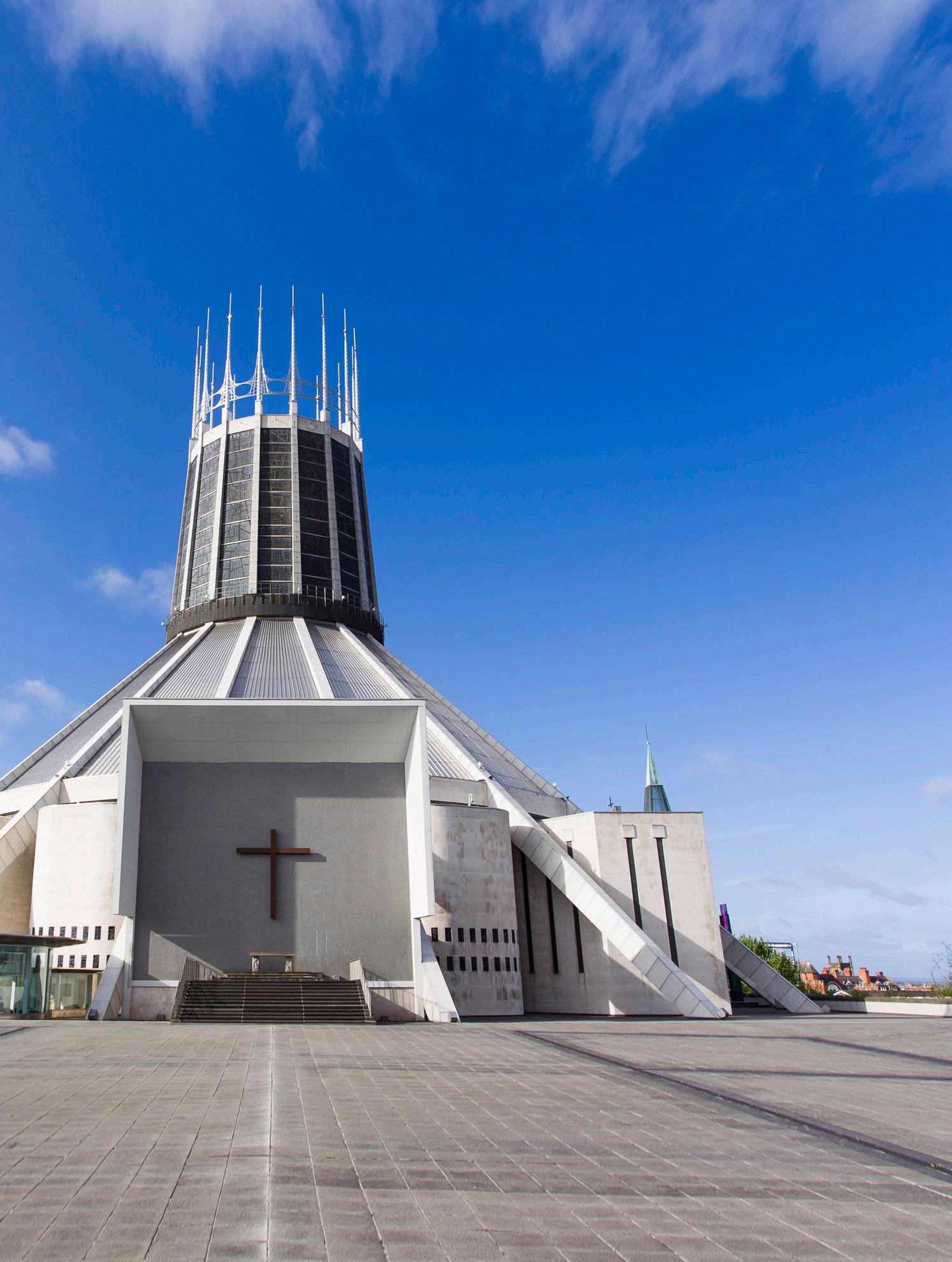
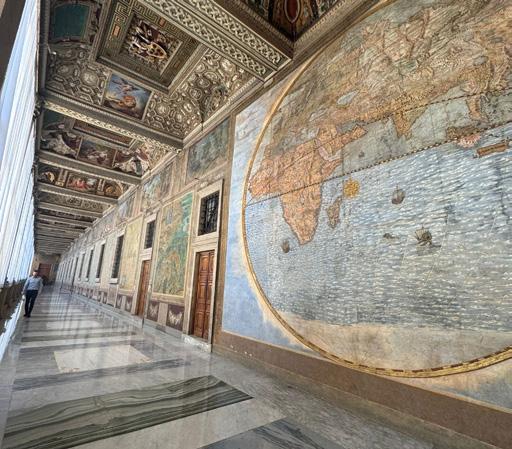



Solidarity with the Jewish community | Light up a life with Nugent

It is 175 years since the founding of the diocese of Liverpool in 1850, following the Restoration of the Catholic Hierarchy of England and Wales.





Solidarity with the Jewish community | Light up a life with Nugent
Begin a journey of faith, learning, and belonging with us.
Our schools are so much more than places of academic excellence. They are places of hope, inspiration and transformation. Rooted in the richness of Catholic values, we nurture every child to grow in wisdom, compassion, and confidence, preparing them to lead with integrity in an ever-changing world.
Why families choose SJCMAT?
World-class Catholic education with strong Gospel values
High expectations and individual support
Creative, rich, and inspiring curriculum
Calm, safe environments where every child belongs
Begin your journey today.
1.
2.
3.
Find your nearest SJCMAT primary school at:
Arrange your personal visit or phone call by contacting the school directly. Complete the application form for Reception or for in-year admissions.
If your child was born between 1 Sep 2021 and 31 Aug 2022, you can apply for a Reception place until 15 January 2026.

We’d love to welcome you. enquiries@sjcmat.co.uk | 0151 272 0173

As the days shorten and the sunlight becomes gentler and fades away during November, the month is a time of remembering. We remember the saints rejoicing in heaven on All Saint’s Day, including all those who lived faithfully their baptism and are known to us. We pray for our loved ones on All Souls’ Day. This is an act of charity and love. We believe that our prayers and Masses help them on their journey into God’s mercy and heaven and that the angels guide and carry them home to be in the presence of the loving and compassionate God.
As St. John Henry Newman wrote, “Angels, to whom the willing task is given, Shall tend, and nurse, and lull thee, as thou liest; And Masses on the earth, and prayers in heaven, Shall aid thee at the Throne of the Most Highest.” — The Dream of Gerontius, Part I
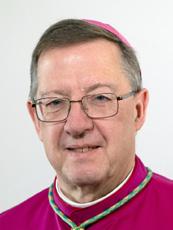
On Remembrance Sunday, we remember members of the armed forces who have died in war and conflict and especially in Liverpool, the members of the Merchant Navy on the convoys of the Second World War.
Towards the end of the month on Sunday 23 November, we will celebrate Christ the King, the Feast of the Metropolitan Cathedral, as well as Youth Sunday. After our prayers for the dead and the sorrow and sadness of remembering, we rejoice in the triumph of Christ who reigns in heaven with all the Saints. He reigns as king to establish not a worldly kingdom but a kingdom of truth and life, a kingdom of holiness and grace, a kingdom of justice, love and peace. He enlightens and renews our hearts, makes us holy by his grace, and transforms society and all creation according to his plan.
I hope many young people will gather in the churches and I invite you to come to the Cathedral to celebrate the Mass with me. Let us rejoice in their faith which was so beautifully witnessed in Lourdes during the summer.
May God bless you all.
Archbishop John Sherrington Archbishop of Liverpool
For the prevention of suicide. Let us pray that those who are tempted to commit suicide might find the support, care and love they need in their community, and be open to the beauty of life.
Editor Harriet Anwyl
Editorial Catholic Pictorial Magazine, St Margaret Clitherow Centre, Liverpool Archdiocesan Office, Croxteth Drive, Liverpool L17 1AA
Tel: 0151 522 1007 Email: CatholicPic@rcaol.org.uk
Advertising Sales team 0151 709 7567 sales@cpmmmedia.com
Contributor
Katie Parry
Pictures Nick Fairhurst www.nickfairhurstphotographer.com
Martin Cahill (cahill-photography.com)
Website: www.catholicpic.co.uk
Twitter: @PicCatholic
Youtube: CPMM Media
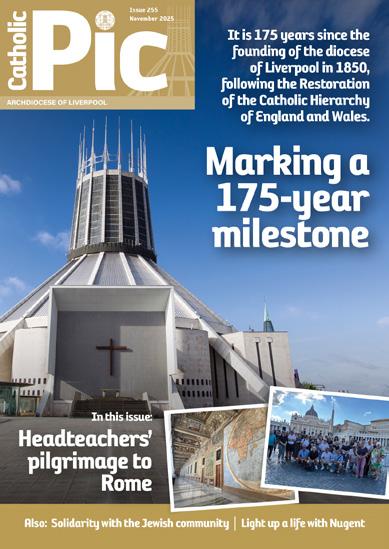
Contents:
4 Main Feature Marking a 175-year milestone
7 Sunday Reflections
8 From the Archives Farewell to a favourite rendezvous
9 News News from around the archdiocese
12 Cathedral Record
13 What’s On What’s happening in the archdiocese
14 Catholic Life

16 Pastoral Ponderings
17 Profile Father Henry Nevin SDS
27 Animate Youth Ministry
28 Pic Extras Mums the word News from the KSC
29 Dialogue and Unity
Copy deadline December 2025 - Monday 10 November 2025
Subscriptions To take out a subscription please email Kim O’Brien at kim.obrien@cpmmmedia.com or call 0151 709 7567
Distribution Contact Barbara on 07714 814 662
Publisher CPMM Ltd Suite 4 Pacific Chambers, 11-13 Victoria Street, Liverpool L2 5QQ
CPMM
“Today, we see a very different archdiocese. It is important we thank God for the blessings which have led to Catholics playing their full part in society.”
Archbishop John Sherrington
It is 175 years since the founding of the Diocese of Liverpool in 1850, following the Restoration of the Catholic Hierarchy of England and Wales.
On Thursday 23 October 2025, a historic moment occurred. King Charles III and Queen Camilla met the Holy Father, Pope Leo XIV, in Rome. The King and the Pope then prayed together in the Sistine Chapel for the care of God’s creation, the first time a reigning monarch has prayed with the Pope in 500 years.
Later in the day, the King visited the Basilica of St Paul’s Outside the Walls, which is historically associated with the Anglo-Saxon and medieval kings who sent gifts and alms to support the adjacent abbey. King Henry VIII was an honorary canon of the basilica. The heraldic shield of the abbey is surrounded by the insignia of the Order of the Garter, indicating another deep historical link between the monarchy and the papacy. In the basilica, King Charles was given the title “Royal Confrater of Saint Paul” as a sign of spiritual friendship and a special chair bearing his coat of arms, which will remain there for him and his successors.
This meeting is another important moment in the healing of the break between the monarchy and the Catholic Church by Henry VIII. It is an important ecumenical symbol.
Three and a half weeks earlier, on 29 September, Archbishop John
Sherrington celebrated a Mass to commemorate the 175th anniversary of the Restoration of the Catholic Hierarchy of England and Wales. The return of named Catholic bishops with geographical dioceses in England was a further step to the full recognition of the Catholics in this country. The earlier Catholic Relief Acts of the late 18th century and the Catholic Emancipation Act of 1829 removed the restrictions on Catholics following the Reformation and allowed them full rights to property, their religion and schools, as well as to sit in Parliament and to vote.
The 1850 restoration marked the return of bishops, the erection of dioceses and the normal governance of the Church in communion with Rome. Prior to then, the Church in this country had been governed since the Reformation by apostolic vicars who were bishops. Today’s Liverpool Archdiocese was part of the Northern District, and then the Lancashire District in 1840.
The new diocese in 1850 included the present diocese of Lancaster (separated in 1924) and stretched into the Lake District. The then Vicar Apostolic of the Lancashire District, George Brown, became the first Bishop of Liverpool. In 1851, there were 84 churches with 122 priests. These included Benedictines, Jesuits and priests from the seminary of Douai in Flanders, who after the French
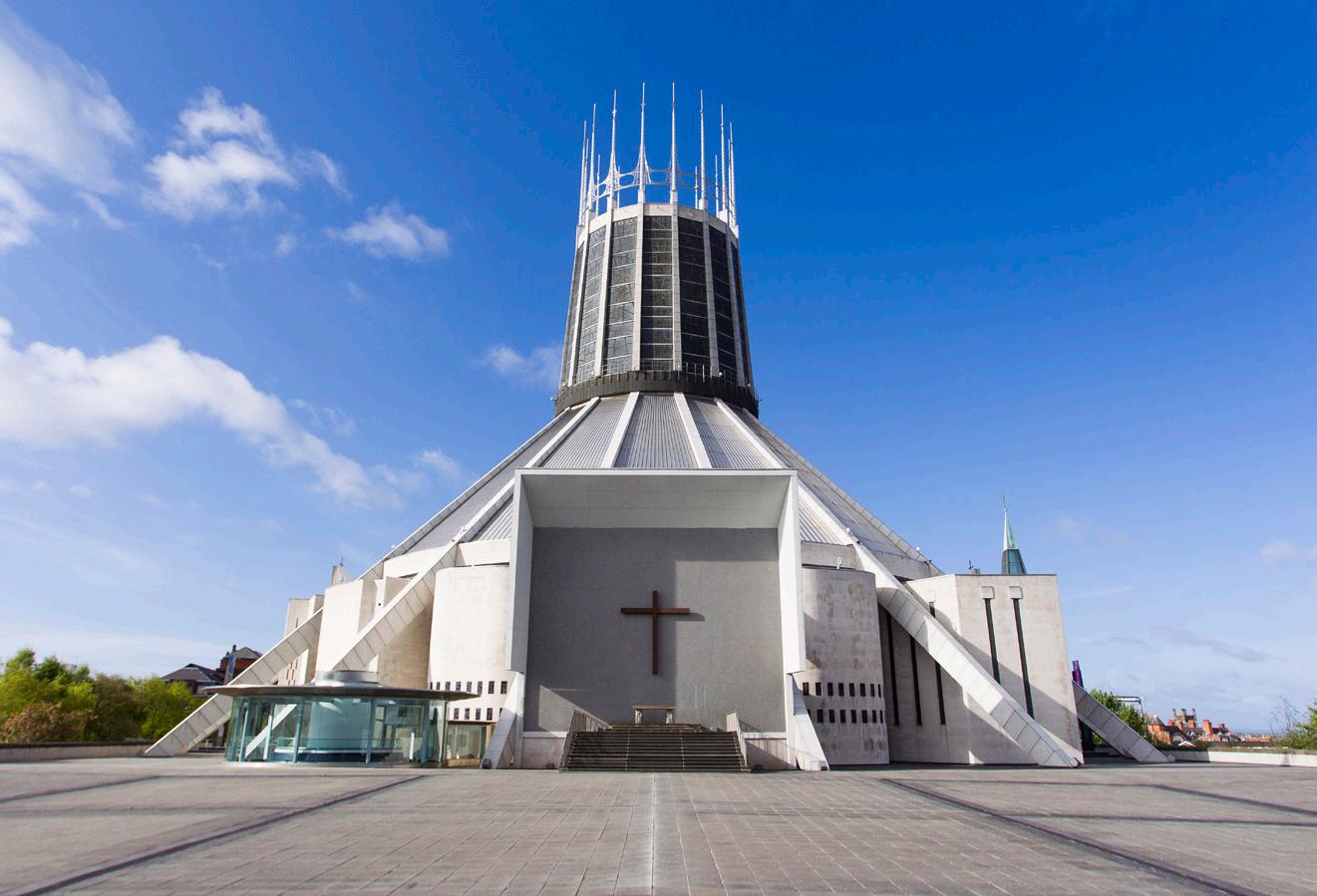
Revolution had relocated to Ushaw College in Durham. A French priest of particular significance was Father Jean-Baptiste Gerardot, who in 1804 established St Anthony’s parish on Scotland Road, not long after the Benedictines had built one of their early churches, St Peter’s on Seel Street.
The formative diocese included the recusant families of Lancashire, with their history of the martyrs, the new mill towns, and the mining towns around Wigan. To the south, the rapidly growing city of Liverpool continued to expand with the docks and shipping. The north end of the city in particular became a refuge for many Irish immigrants fleeing from the famine who either stayed or headed to the United States and Canada. Between 1850 and 1853, almost 300,000 people arrived at the River Mersey from Ireland, and and by 1861 the city had nearly 90,000 Irish-born residents. Liverpool then was densely populated; poverty was rife, and diseases such as dysentery, cholera and typhoid killed many people. Food was scarce. The Church served the needs as it could. In the 1847 typhus plague, ten priests died ministering to their people. About 5,100 people died in all. Another plague in 1849 also killed many people.
Reaction to the new bishops was mixed, including among some Catholics. The
restoration stirred up much prejudice and hostility to the Church. Liverpool Town Council passed a resolution against ‘the recent assumption of authority and power in this kingdom by a foreign potentate’. There was protest against ‘Papal aggression’. The Orange Order attacked the well-known Passionist priest Fr Ignatius (George) Spencer – who was declared Venerable by Pope Francis in 2021 – and there were attacks on St Patrick’s Church.
The healing of relationships between Catholics and others would take many decades. The relationship-building of Archbishop Derek Worlock and Bishop David Sheppard across 20 years from 1976 forged links that continue today, when their statues stand together on Hope Street.
In that post-restoration period, the Church continued to grow as she does when she is persecuted. Bishop Brown continued to found schools. St Edward’s College had been opened in the 1840s and Catholic education expanded. He also founded the Blind Asylum, the Industrial Lace School, Birkdale Farm School, and St Elizabeth’s Institute for training poor girls for service. In 1856, the Sisters of Notre Dame opened a training college for women teachers at Mount Pleasant.
Education was a priority for the bishop
and his successors, as it was a means of ensuring a future for children. This was a significant aspect of their work alongside Fr James Nugent to serve the poor; work which continues today with the Nugent Society.
Through those efforts to provide education, by 1905 the Diocesan education committee had responsibility for 177 elementary schools (64 of them run by religious congregations), five boys’ secondary schools or colleges and seven girls’ secondary schools or colleges, along with seven pupil teachers’ centres. Meanwhile, the wish to provide priests for the growing diocese led in 1883 to the opening of Upholland Seminary.
Today, we see a very different archdiocese. It is important we thank God for the blessings which have led to Catholics playing their full part in society. Indeed, the Church, led by bishops as the shepherd of their flock, is to be like a leaven in society as it proclaims Jesus Christ as the Saviour who shows us the meaning of life, truth, justice and the commandment of love.
As the Church serves all today, we remember and thank God for those who have gone before us. Let us continue to pray for growth in unity between Christians. Archbishop John Sherrington
Milestones along the way
1850 – Liverpool diocese is established, including Westmoreland, Lancaster, the Fylde and Furness coasts and Isle of Man. Its first bishop is George Brown.
1911 – Liverpool becomes an Archdiocese, with Thomas Whiteside its first Archbishop.
1923 – The first Liverpool Archdiocesan Pilgrimage to Lourdes takes place, featuring the miraculous healing of Jack Traynor.
1924 – The archdiocese is reduced in size by the founding of the Lancaster Diocese.
1967 – The Metropolitan Cathedral of Christ the King is consecrated. Designed by Sir Frederick Gibberd, it opens more than 100 years after Bishop Alexander Goss had instructed Pugin to design a cathedral.
1979 – Archbishop Derek Worlock establishes LAMP, the Liverpool Archdiocesan Missionary Project, formalising a partnership between the archdiocese and the Missionary Society of St James the Apostle. Over the years, nearly 20 priests have served in South America.
1980 – Liverpool hosts the National Pastoral Congress, which yields the document ‘The Easter People’, paving the way for Pope John Paul II’s visit.
1982 – Pope John Paul II celebrates an open-air Mass for 150,000 people at Speke Airport. To mark the drive for unity undertaken by Archbishop Worlock and Bishop David Sheppard, the Pope is then welcomed at the Anglican Cathedral for a short service followed by a procession along Hope Street to the Metropolitan Cathedral for Mass.
2023 – The Church of St Mary of the Isle in Douglas, Isle of Man, is granted co-cathedral status.
2024 – Jack Traynor’s healing is declared the 71st official miracle of Lourdes.
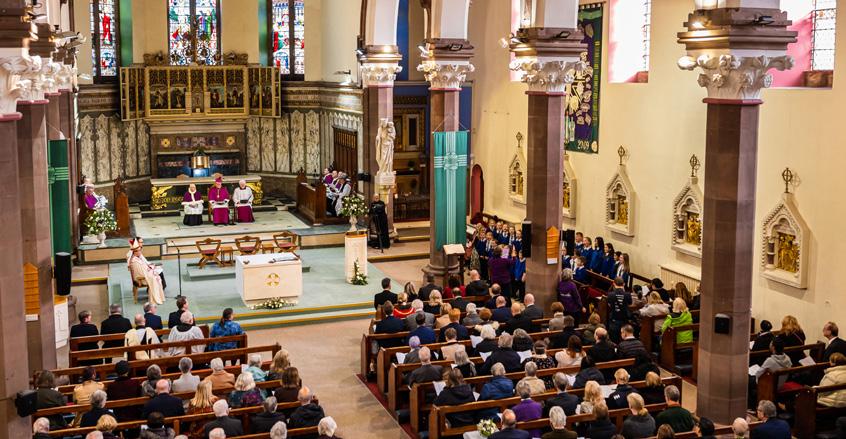
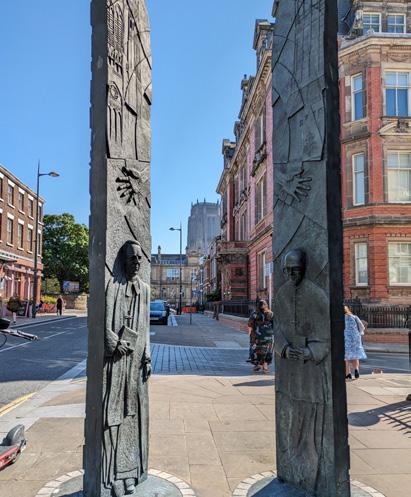

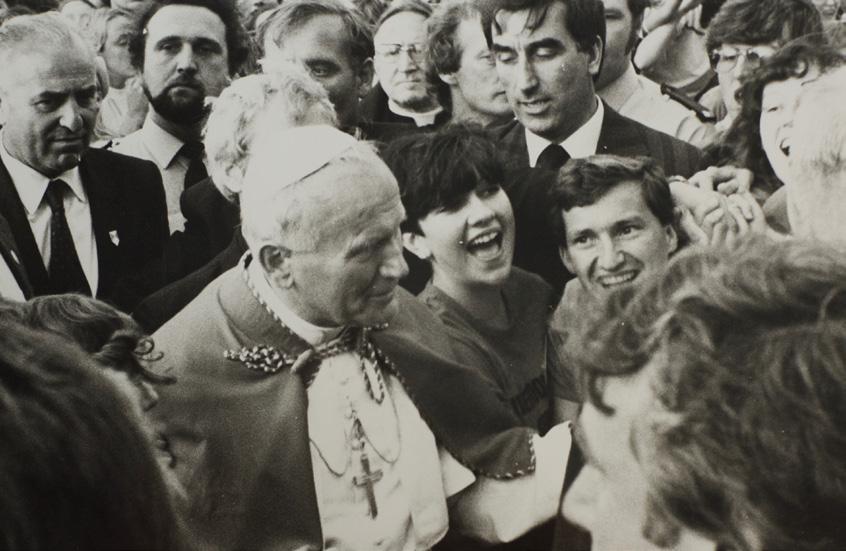


In our Catholic tradition, and indeed in many other cultures, November is a month of remembrance and a month of the Holy Souls.
It must be something about the changing of the clocks, the drawing in of the days and the increasing coldness of nature around us which makes us think about the brightness of hope and the security of hearth and home.
Indeed, for us, November does not begin with the remembrance of the dead (All Souls) but with the proclamation of the victory of the Resurrection in the Holy Ones across the centuries (All Saints). All Saints – or All Hallows as it is sometimes called – is a celebration of light which has victory over darkness and of the fullness of life which makes sense even of physical death itself.
All Hallows Eve – the day before All Saints – is presented as a night on which ghouls and spirits run amok precisely because they realise that the power of light, the power of the Resurrection, is stronger than anything they can muster!
Through the month of November, liturgies in our parishes will present us with many opportunities to remember our families and friends who have “gone before us marked with the sign of Faith” – not
Canon Philip Gillespie
forgetting, of course, the ones who have no one to pray for them. Our Catholic sense and spirituality are wide enough to embrace those whom we have never met in life but who are very much our brothers and sisters in Christ.
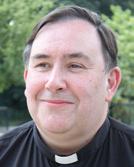
Prayer of Commendation, Order of Christian Funerals (adapted):
Into your hands, Father of mercies, we commend our brother and sisters in the sure and certain hope that, together with all who have died in Christ, they will rise with Him on the last day.
We give You thanks for the blessings which You have bestowed upon them in this life: they are signs to us of Your goodness and of our fellowship with the saints in Christ.
Merciful Lord, turn toward us and listen to our prayers: open the gates of paradise to Your servants and help us who remain to comfort one another with assurances of faith, until we all meet in Christ and are with you and our brothers and sisters for ever.
We ask this through Christ our Lord. Amen.
It is said that those close to death on the battlefield or about to be executed cry for their mothers. For Catholics, it is Mary to whom we instinctively turn in times of peril and woe.
I was born on 13 May, and my mother often reminded me that Our Lady first appeared to the three children at Fatima on that date. Both my parents were regulars on the Liverpool pilgrimages to Lourdes before the Second World War. My mother went there again in 1955 but she never made it to Fatima.
I’ve just returned from travelling to Spain and Portugal on my motorbike. I’ve been to Spain many times, but Portugal was a first.
In planning my first motorcycle trip after retirement on 1 September, I decided to head for Fatima. I sensed I was doing this for my mother (who died in 1980) as well as for myself.
Disembarking from the ferry in Bilbao, I headed for Valladolid. There, at the Royal English College, I was welcomed by Liverpool priest and vice-rector Joe Kendal, the rector John Flynn, and Father Nicholas Williams. I missed another Liverpool priest, Fr James Preston, the spiritual director, whose arrival had been delayed by visa formalities. The new intake of students was expected on the day of my departure. After three days
Devine OBE
enjoying their hospitality, I headed west for Portugal.
Living on a small island, the British underestimate the vaster distances involved in continental travel. At the age of 77, I limited myself to no more than 200 miles each day, and I arrived in Fatima. So how was it? For one familiar with Lourdes, it was difficult to avoid comparisons. The number of pilgrims was considerably fewer, but it was September rather than high summer. Apart from one or two wheelchairs in the crowd, Fatima didn’t seem to be a place to which sick people flocked. Nor did I sense I was entering sacred space, as I do when drawing close to the grotto at Lourdes. Maybe it’s the faith of those obviously afflicted with physical suffering that makes Lourdes special, even for the hale and hearty.
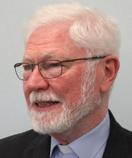
Fearfully and wonderfully made
When I went to school, I was placed in the class of Mrs Newman, a wonderfully gruff but kind person.
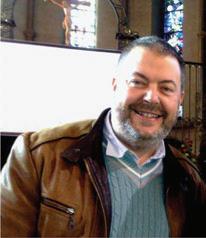
Back then, I had a secret. Life was very hard at home. Dad was an alcoholic and when I was left by Mum at school, I’d be told: “Don’t tell anyone what happened last night.” She was so terrified that if I blurted out about our problem, my brother and I would be taken from her.
Mrs Newman sensed my anxiety and pain, and I was often taken on her knee when she whispered that God loved me. My nana who lived with us would regularly do the same. My mum would tell me how wonderful I was, despite her own difficulties. I thank God daily for those wonderful women of faith who spoke truth into me until the time when I could believe that I was fearfully and wonderfully made.
For a long time, I still thought our home life was my fault, and it was only by grace that I learned how extraordinary each human being is and that it was true for me as well. That line that we are fearfully and wonderfully made is in Psalm 139. Each human being, regardless of their life’s situation, is wonderful. I don’t believe that we really ever come to terms with that truth.
John O’Donohue, the Irish poet and philosopher, wrote that every person “is suffused with wild and vital divinity”. The challenge for us as human beings is to see and know that within us is the spark of the divine and that we are indeed fearfully and wonderfully made. To be unaware of this means that we don’t truly live but rather exist. Psalm 139 goes on to say that God made every single part of us. It is expressed in that wonderful line that God “knit me together within my mother’s womb”. None of us are an accident. We are known and loved by a God who created and designed us out of love. Every human being is wonderfully complex. I am sure beyond any shadow of doubt, and even with the truth of evolution, that I was created and designed with purpose. While it might be true that I am similar to other human beings, I am not exactly the same as other human beings. I am unique.
This means we should take our humanity very seriously. If God has created us with so much care, then we must learn how to care for one another, finding ways to encourage us to love, respect and value this gift of life in every human person. I think that is why love is at the centre of the Gospel of Christ.
Reflecting on my experience along the endless miles of my return journey, I was left with the quiet reassurance that Mary has been taking care of both me and my mother in the years since the day of my birth on 13 May 1948. I approach this November realising that that Mary is the mother of those who have died as well as the living. Holy Mary, Mother of God, pray for us sinners, now and at the hour of our death.
It seems to me that the overriding sadness of our world today is that human life isn’t considered to be of value. There are parts of our world where murder is taken for granted, where ethnic cleansing is seen as the norm, and people live in fear. Sadly, we live in maelstroms of racism, homophobia and religious intolerance. We are fearfully and wonderfully made, but we have a huge mission to allow that truth to flow through the world and penetrate the depths of humanity.
Father Chris Thomas
by Neil Sayer, Archdiocesan Archivist
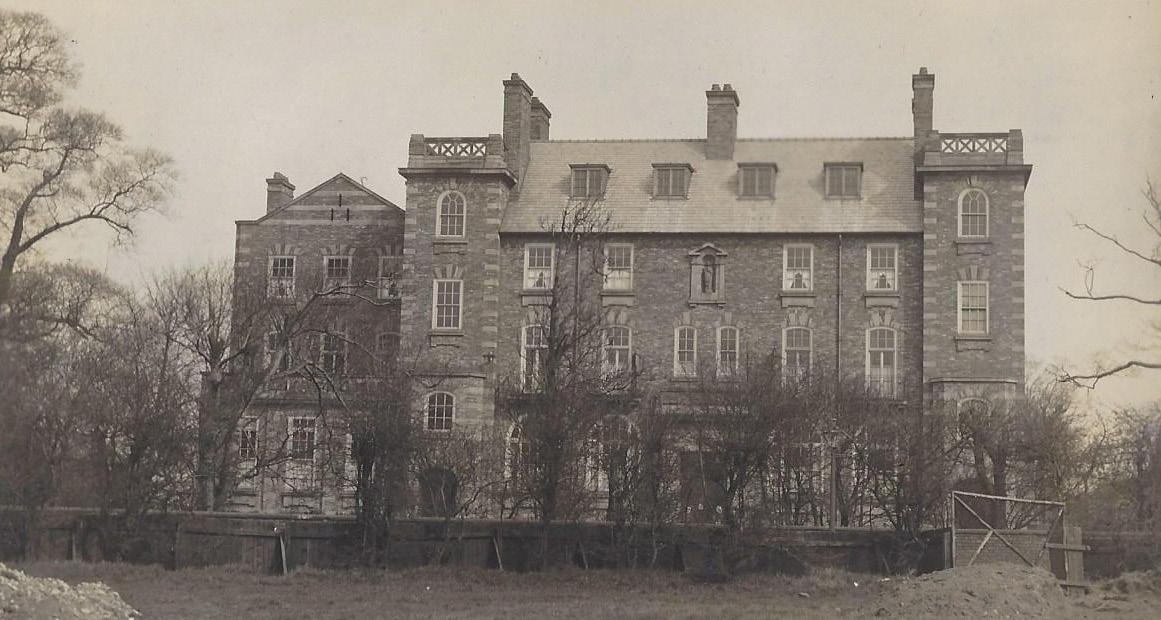
The Sisters of the Cenacle said farewell to Liverpool last month. Archbishop Sherrington celebrated a Mass of Thanksgiving at the Lance Lane Convent on Saturday 4 October.
Whilst acknowledging “the shadow of sadness because a chapter is ending and the convent closing”, he thanked the Sisters for assisting so many people to achieve a deepened spirituality.
Quoting from Laudato Si’, he noted Pope Francis’ advocacy for a contemplative life, a “serene attentiveness … which accepts each moment as a gift from God to be lived to the full.” For many people, that will be one legacy of the Sisters’ presence in the archdiocese: “If we hold fast to this spirituality, I think we will be honouring the memory of the ministry of the cenacle lived here for 117 years”, said the Archbishop.
The Congregation of Our Lady of the Retreat in the Cenacle opened a convent on Lance Lane, Wavertree on 20 May 1908. It was the nuns’ third foundation in England, following the opening of convents in Manchester and London. The order originated in France in 1826, as numerous pilgrims flocked to the tomb of St Regis in the Ardèche region near the Alps. Father Jean Pierre Etienne Terme and Marie Victoire Couderc realised the need for a hospice in their parish of La Louvesc. They built a large house to welcome female pilgrims, and Marie Victoire became its first Superior, known as Mère Thérèse. Very soon, the founders saw that the convenience of pilgrims was not a sufficiently spiritual purpose, and that guests would benefit from religious exercises and instruction. So was born the idea of the Cenacle, where retreats and religious instruction became a means of reviving faith and furthering the kingdom of God.
Cenacle comes from the Latin ‘cena’ meaning ‘supper’ and refers to the room in Jerusalem where Jesus celebrated the Last Supper and where Our Lady waited with the apostles and disciples for the coming of the Holy Spirit at Pentecost.
In the busy port and industrial city of Liverpool, the convent soon established itself as a haven. A report published only two years after it opened noted that “Since its very beginning, it has seemed destined to become a favourite rendezvous for souls in search of ‘that peace which the world cannot give’”. Retreats for girls, mothers and nurses were frequently given, and in 1913, some 1,250 children were accommodated. Archbishop Whiteside wrote approvingly that “both children and parents are becoming keenly interested in retreats, and thus we have the satisfaction of knowing that a generation is being trained up to regard an annual retreat as an event in their lives that they will not willingly forego.”
The Cenacle proved so popular that a new convent was built in 1914, carrying on the work of offering public and private retreats. As time went on it became a place where people of all faiths could
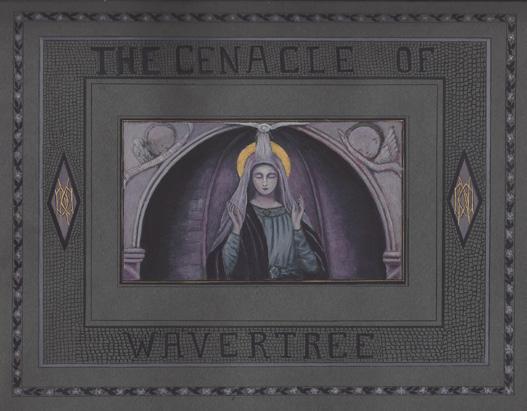
cover for a commemorative photograph album,
go to deepen their spiritual lives by spending time in prayer or in following a retreat programme. As interfaith dialogue sought to overcome barriers, in 1980 a day school was held for Sixth Formers from Liverpool schools. It included talks by a Methodist, an Anglican, and a representative of the Society of Friends, and group discussions allowed the teenagers to exchange lively ideas about the voice of God reaching them. The organiser of the day school, Fr Peter Ryan, saw an ecumenical purpose to the event: “In a sense”, he said, “the important thing is not what they discuss, but the fact that they are meeting.”
The convent building became a well-known local landmark, but by the mid-1980s it was clear that the premises were unsuitable for the sisters, as well as being expensive to maintain. In 1991 the small community of nuns numbered around 20, and the Catholic Pic reported on the closure of the old convent: “More than three quarters of a century of work by the Cenacle nuns has taken place there, from retreats to conferences and catechetical classes. But the high-ceiling property is no longer suitable or adaptable to the changing needs of the Sisters and a purpose-built building comprising retreat house, exposition chapel, and infirmary, was the only answer.” A new convent was built in the grounds of the old one that offered better facilities for conference and spiritual purposes, and this was opened in July 1991, the old convent being demolished soon afterwards.
The pull of the religious life has continued to weaken, and a decline in the number of vocations led to the Sisters’ decision to close their institution in Wavertree. Archbishop Sherrington expressed gratitude for the community’s contribution to the archdiocese: “The ‘cenacle’ communicates warmth, friendship, the presence of Jesus, the sharing of food and wine, and support.” The Cenacle Sisters will celebrate their bicentenary in 2026, but sadly not in Liverpool.
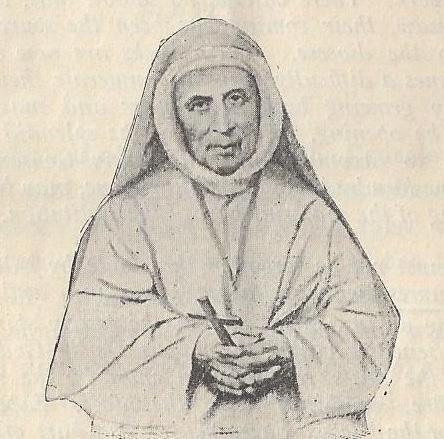
The foundress of the order, Mère Thérèse, canonised in 1970 as St Thérèse Couderc
If you’ve got any news from your parish that you’d like featured e-mail us with the details at: CatholicPic@rcaol.org.uk
On Friday 3 October, people from across the archdiocese gathered to give thanks for Archbishop Malcolm McMahon OP following his retirement earlier this year.
Parishioners, clergy and dignitaries gathered at the Metropolitan Cathedral of Christ the King to celebrate the 11 years Archbishop Malcolm served as the Archbishop of Liverpool.
Cardinal Vincent Nichols was the homilist and warmly paid tribute to Archbishop Malcolm, saying: “Most recently, Archbishop Malcolm described himself as yesterday’s man. Well, what a yesterday!
“Leadership of Pax Christi, initiator of the diocesan synodal path even before Pope Francis had thought of it, leading us through the tragic events in Southport in July last year, fashioning the restructuring of parish life and the emergence of families of parishes, compassionate in the face of hardship and our wrongdoing, for example the LoudFENCE events, rejoicing in the recognition of the miracle cure of Jack Traynor in Lourdes so many years ago.
“The list is long and forgive me if I’m not mentioning any other favourite events of the past 11 years, but all of them are things we treasure and for which this evening, we thank God.”
Archbishop Malcolm said: “It’s been a wonderful 11 years. Yesterday, at the jubilarians lunch, we were celebrating priesthood. It was a wonderful celebration.
“I do have one moment which gave me a great sense of pride. That was when we had the 2018 National Eucharistic Conference here in Liverpool, and I stood outside the Liverpool Echo Arena and welcomed people from all over the country. I felt so at home, at home amongst God’s people and home here in Liverpool. “That is one highlight, among many, that I will remember for the rest of my life.”
The Mass was followed by a drinks reception in the cathedral’s crypt.

There was great joy at St Mary’s Church, Leyland, on Saturday 27 September, as parishioners gathered to celebrate the Ruby Jubilee of Fr Joe Bibby, marking 40 years since his ordination to the priesthood.
The Solemn Mass of Thanksgiving was a special occasion, with Fr Joe Bibby himself presiding, many other priests of the archdiocese concelebrating, and Archbishop John Sherrington in choir during his first visit to the parish. The celebration was followed by a warm, welcoming parish reception. Parishioners shared cards and good wishes with Fr Joe, expressing their gratitude for his many years of devoted service.
“It was a great honour and privilege to be able to celebrate 40 years of priesthood surrounded by so many parishioners of St Mary’s Leyland, family and friends,” Fr Joe commented. “They say time flies when you’re having fun - I must have been having a lot of fun over the past 40 years!”
The parish also marked another significant milestone this autumn. On Sunday 12 October, St Mary’s celebrated the 75th anniversary of its Altar Servers’ Guild of St Stephen, founded in 1950. The event was attended by the Guild’s National President, Paul Briers, along with two members of the Liverpool Archdiocesan committee. Six new altar servers were enrolled, five received bronze medals, and one was presented with a silver medal – a fitting tribute to decades of faith and service at St Mary’s.
In honour of this special occasion, Pope Leo XIV granted Fr Joe Bibby and the members of the Guild of St Stephen at St Mary’s, Leyland, an Apostolic Blessing, recognising their faithful service and dedication over seventy-five years – a fitting conclusion to a season of joyful celebration in the parish.
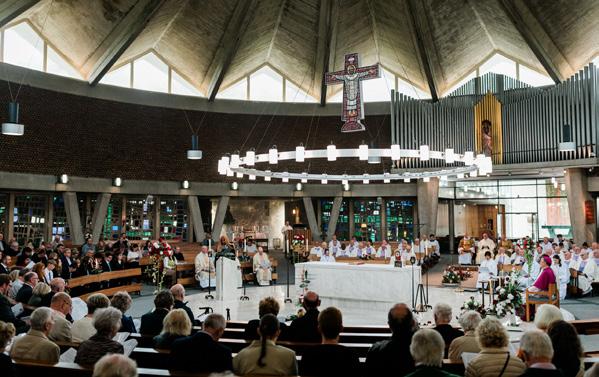

It was a joyful day at the St Margaret Clitherow Centre as participants celebrated their graduation from the Loyola Certificate in Pastoral Ministry.
Graduates were joined by their families, tutors, and clergy for a special celebration that included lunch and a Mass celebrated by Canon Sean Riley. The occasion marked not only the completion of their studies but also a moment to reflect on their journey of faith and consider how they might continue serving in ministry.
The course, delivered through a partnership between Loyola University Chicago, the Archdiocese of Liverpool, and other northern dioceses, equips participants with theological and pastoral skills for service in their parishes and communities.
One graduate described the day as “magical — from the lovely flowers on the tables to the celebratory banners and the insightful programme. I loved the Mass and the way we were encouraged to look ahead.”

The parish community of St Charles and St Thomas More, Aigburth, recently embraced the spirit of the Jubilee Year by participating in CAFOD’s ‘Pilgrims of Hope’ reflection, bringing new energy to their faith journey and deepening their commitment to social justice.
Inspired by CAFOD’s Jubilee reflection guide, which draws from Luke 4, 16-21 parishioners gathered to reflect on themes of renewal, hope and liberation.
The Justice and Peace group who organised the sessions said: “This reflection has been a wonderful way for us to come together, pray, and consider how our faith calls us to be true Pilgrims of Hope. It reminds us that hope is not passive, but a call to solidarity and justice.”
Over several sessions, the group explored Jesus’ mission to proclaim good news to the poor, and freedom to the oppressed, linking these messages to contemporary issues like climate change and global debt relief. Parishioners shared personal stories of inspiration, deepening their understanding of Catholic social teaching, as well as pledges to support CAFOD’s ongoing work. They also prayed for communities across the world suffering hardship, embodying the call to walk alongside those in need.
They are now looking forward to viewing the Jubilee Icon by Ethiopian artist Mulugeta Araya, commissioned by CAFOD, when it visits the Metropolitan Cathedral on Saturday 8 November for Adoremus.

On 27 September, the Archdiocese of Liverpool’s Pastoral Development Department hosted a Day for Catechists at the St Margaret Clitherow Centre.
The day brought together catechists from across the archdiocese to reflect on their vocation, share experiences, and spend time in prayer. Sisters Carino and Hyacinthe from the Dominican Sisters of St Joseph led the sessions, guiding participants to see their ministry through the lens of Scripture.
Feedback from attendees was overwhelmingly positive. One participant shared, “Thank you for making things clearer for me and for reminding me that I am not alone in my catechesis.”
Another said, “I liked the opportunity to meet new people and get some good ideas.”
Moses Mui, Training Coordinator for the Archdiocese, said, “We had a wonderful day. We’re looking forward to more formation opportunities for the catechist community in our archdiocese.”
The Sisters of the Cross and Passion have confirmed that they will be withdrawing from the Archdiocese of Liverpool at the end of the month.
In a letter to Archbishop John Sherrington, the congregation confirmed that Sister Pat Redgrave CP and Sister Maureen McNally CP, the last two remaining Sisters serving in the archdiocese, will be leaving, ending more than 170 years of dedicated service in the area.
The Congregation was founded by Venerable Elizabeth Prout in Manchester 1852. In 1855, Elizabeth came to Sutton, St Helens, where she and her companions taught in several schools. Over the decades, the Sisters have also had a presence in Warrington (1899-2014), St Hugh’s parish Liverpool (from 1909), and following the Second World War, Our Lady of Good Help in Wavertree. In 2006 Our Lady of Good Help Parish joined with Christ the King where the Sisters continued to serve in the Parish up to the present. They also served in the Parish of St John the Evangelist Kirkdale 2013-2019.
Sister Therese O’Regan CP said: “Like many Religious congregations today, age has caught up with us and a shortage of vocations in this part of the world has led us to make hard decisions.
“However, we are leaving behind in the archdiocese one of our most treasured possessions; our beloved Foundress Venerable Elizabeth Prout whose remains are enshrined along with two Passionist Priests, Blessed Dominic Barberi CP and Venerable Ignatius Spencer CP in the church of St Anne and Blessed Dominic in Sutton.”
Pilgrimage to places of prayer and peace
Pilgrimage to places of prayer and peace
Archbishop John Sherrington said, “I am very sad that the Sisters of the Cross and Passion will be leaving the Archdiocese of Liverpool after 170 years and thank them for their dedication, religious presence, and service to God’s holy people. I thank Sister Pat and Sister Maureen for their presence amongst us. May God stay with them in the next step of their lives.”
The Archdiocese of Liverpool expresses its heartfelt gratitude to the Sisters of the Cross and Passion for their faithful witness, compassion, and service over the past 170 years. Their legacy of prayer, education, and care will continue to inspire generations to come.

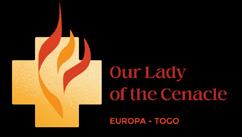
Last month, we published an article about the closure of the Sisters of the Cenacle community in Wavertree.
The sisters would like to thank everyone for the support and prayers they have received since announcing the closure.
Pilgrimage to places of prayer and peace
Step away from the everyday and encounter the places where faith and history meet. McCabe has been trusted for over 40 years to create pilgrimages that bring the Scriptures to life. Travel with like-minded companions, guided by expert leaders, and return home with more than memories – return renewed.
Step away from the everyday and encounter the places where faith and history meet. McCabe has been trusted for over 40 years to create pilgrimages that bring the Scriptures to life. Travel with like-minded companions, guided by expert leaders, and return home with more than memories – return renewed.
The sisters will keep Catholic Pic readers in their prayers and ask for continued prayers in return:
Lord, we thank you for the gift of our friends and benefactors whose support has enabled us to fulfil our ministry, and we ask you to bless them for their kindness.
Lord in your mercy
Lord, we pray for the sisters from this house who will be leaving this Cenacle and starting new ministries; may the Lord bless them with peace and hope.
Lord in your mercy
Discover our upcoming pilgrimages: Call 01252 226133 or visit www.mccabe-travel.co.uk
Discover our upcoming pilgrimages: Call 01252 226133 or visit www.mccabe-travel.co.uk
Please quote ‘CATHPIC’ when calling.
Lord, we bring to you the needs of our broken and hurting world and pray for an end to violence and war. Guide the minds of leaders towards dialogue and understanding so that your peace and love may reign in the world.
Lord in your mercy
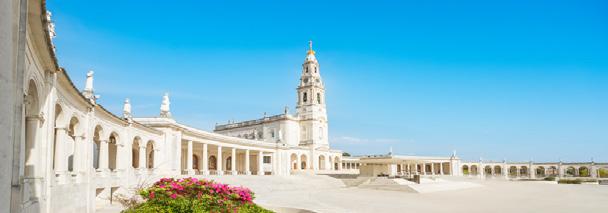
Step away from the everyday and for over 40 years to create pilgrimages that bring the Scriptures to life. Travel
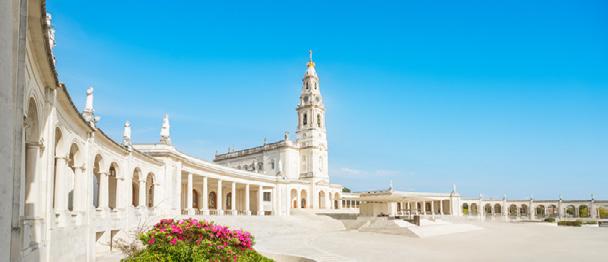
We pray for all those to whom we have ministered, may they continue to grow in their faith and love of the Lord.
Lord in your mercy
We pray for our departed sisters who have lived and ministered in this house, may they now enjoy the fullness of God’s presence.
Lord in your mercy
We gather all these prayers and commend them to Our Lady of the Cenacle
As we pray Hail Mary …
written by Niamh Foy, a member of Archdiocesan Young Adult Group
It’s a dark Tuesday evening in November, streetlamps and car horns giving sight and sound to the cold night.
Take a left out of Central Station and keep walking on to the urban boulevard of Church Street. It’s aptly named for where you are going. You’ll pass delivery drivers vaping outside McDonald’s, or patrons in a neon-lit bar crooning out the chorus of Coldplay’s Viva La Vida with tipsy enthusiasm. Smile and keep walking.
At the door of the Pauline Book Centre, you will be greeted by a Sister in the smart, plain habit of the Daughters of St Paul. Like all her Sisters, she exudes a calm trust in the Lord, which you hadn’t noticed you lacked in yourself. The bookshelves she leads you along are stacked with a cavalcade of holy faces against yellow wood; John Henry Newman, Carlo Acutis, Aidan of Lindisfarne. The painting work is well done; rather than feeling austere, these faces appear warm, as if they had been waiting for you over biscuits and tea.
Upstairs, the Archdiocesan Youth Group is gathering. The kettle is bubbling; someone has brought pizza, and another person has
brought cake. Coats are hanging on the backs of chairs. In the under-35s group there are surgeons, teachers, therapists, retail workers, and college students, amongst others; what unites us all is a vivid Catholic faith, and the life that it demands.
In the circle there are hymns, prayers, reflections. There is, at times, animated dialogue over the stories of the Saints. What is persistent is the culture of reverence and mutual respect, of a shared love of Jesus Christ and His Bride, which permeates all we do. I have made wonderful, funny friends through the group, and I have no doubt that I will continue to do so.
Please join us if you feel so inclined. You are most welcome.

In a world often marked by division, distraction, and doubt, the quiet but persistent presence of faith in the Liverpool City Region is a testament to God’s enduring love, and our love for each other.
Though the headlines may speak of challenges – economic pressures, social change, or the loss of religious identity - beneath the surface, acts of kindness and charitable networks within the faith communities continue to grow.
Churches Together in the Merseyside Region (CTMR), in partnership with Together Liverpool, are delivering an anniversary project across the Liverpool City Region to mark forty years since the landmark Faith in the City report was published in 1985.
“We have found faith in the city,” was the title of the final chapter of the groundbreaking 1985 Faith in the City report, published by the Archbishop of Canterbury’s Commission on Urban Priority Areas. It highlighted the urgent needs of people living in inner-city communities and called on both the Church and the Government to take action. The report was a landmark moment, recognising the role of faith in tackling poverty and inequality. Four decades on, faith is just as visible now as it was then in churches, community centres, schools, streets, and in the hearts of its people. In the Liverpool City Region, signs of faith are woven into the fabric of everyday life. From early morning Masses and services, to collective worship in schools, to foodbanks and food pantries run by dedicated volunteers, faith is ever present.
This anniversary year provides an opportunity for reflection and renewal. It’s a chance to
celebrate the report’s impact, highlight stories of change, and acknowledge how faith-led social action has supported communities over generations. It’s also a call to action to address ongoing needs and build stronger partnerships with civic leaders.
This anniversary year is not just about looking back, it’s about moving forward. One of the key ways we are doing this is by creating the “Vision for the City” manifesto. This manifesto will present a clear picture to civic leaders and faith communities, calling for meaningful, impactful, lasting change, and will be launched at the anniversary celebration event on Tuesday 25 November.
As Pope Leo XIV emphasises the importance of charity and love, he has also highlighted the need to offer new signs of hope that reflect Christian charity. This anniversary year provides an opportunity for church leaders, faith groups and civic leaders to come together in unity to continue to show our love for others through purposeful acts of kindness.
“We are facing a time of unprecedented uncertainty in our world, plunging many people towards despair. Faith is a human quality, which although defining of our Christian identity, is a necessary element in any healthy society. There has never been a more important time for churches to come together to rekindle faith across our communities, and through this initiative we can not only remind of how much we have achieved through working together across our communities, but re-kindle a belief in what can yet be accomplished.” (Revd Phil JumpRegional Minister for the North West Baptist Association and Chair of CTMR).
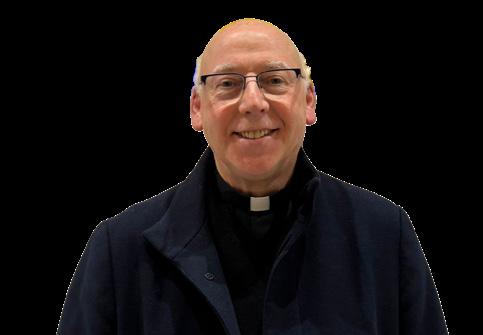
Canon Anthony O’Brien –Cathedral Dean
The Solemnity of All Saints occurs at the weekend this year and will be celebrated at the Sunday Vigil and Day Masses, with the Commemoration of All Souls taking place on Monday.
On the evening of All Souls, the Cathedral Choirs will sing a requiem setting for evening celebration of Mass at 5pm.
On Saturday 8 November, the Cathedral will receive the CAFOD Holy Year Icon which has been journeying around the Dioceses of England and Wales. This is to mark the beginning of a day of devotions and celebrations in adoration of the Blessed Sacrament. The programme for the events that day, entitled “Adoremus”, can be found on the archdiocesan website. This day will begin with Mass at 9am and continue until the Sunday Vigil Mass at 5pm. The following day is Remembrance Sunday and we will begin 11am Solemn Mass with a solemn laying of wreaths in front of the altar in silence.
On the last Sunday of the Church’s year, we celebrate our patronal Feast of Christ the King. Archbishop Sherrington will be joining us for our celebrations and will preside at 11am Mass. On this day, we give thanks for the many events that have taken place here over the 48 years that the Cathedral has been open – both the many joys and also the times of sadness within our archdiocesan and wider Catholic Community. We also ask for the grace and the confidence to face the challenges that may be ahead of us.
The Season of Advent begins on the final weekend of the month. As well as the normal Sunday Mass times there will be an evening service of Advent music and readings “The Advent Sequence” on Sunday at 5pm.
Thursday 6 November
Have you thought about Becoming a MultiAcademy Trust Director?
7:00pm – 8:00pm (Online)
The first of five online sessions hosted by the Archdiocesan Education Department. Each session will be led by people currently serving in the role, offering insights into what’s involved and how you can take part, with time for questions and discussion. Online
For more information, contact Jo Ball at j.ball@rcaol.org.uk
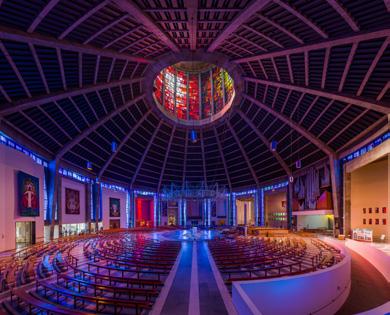
Saturday 8 November
Adoremus Liverpool 2025
Metropolitan Cathedral of Christ the King, Liverpool
9:00AM – 5:00PM
Come and join us to adore the Lord Jesus in the Blessed Sacrament at Adoremus Liverpool 2025. The day will include Holy Mass celebrated by Archbishop John Sherrington, Eucharistic Adoration, opportunities for confession, and a variety of workshops exploring music ministry, social action, and discipleship. There will also be a shared time of diocesan prayer, children’s liturgy, and veneration of the relics of Saint Pier Giorgio Frassati and Saint Carlo Acutis. The day will conclude with Holy Mass celebrated by Bishop Tom Neylon. Metropolitan Cathedral of Christ the King Mount Pleasant, Liverpool, L3 5TQ
Saturday 8 November
Come and See: November 2025
10:30am – 4:00pm at the Irenaeus Project, Liverpool
The next Come and See day in the series will feature a keynote talk from Maria Burgess titled Lord, Teach Us to Pray. All are welcome. Please bring a packed lunch. Suggested donation: £10.
For more information, contact jenny@ irenaeus.co.uk or call 0151 949 1199.
The Irenaeus Project 32 Great Georges Road, Waterloo, L22 1RD
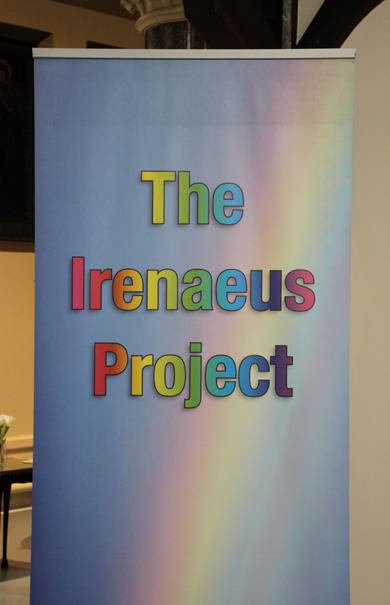
Wednesday 12 November
Have you thought about Teaching in a Catholic School?
7:00pm – 8:00pm (Online)
The second of five online sessions from the Education Department, led by teachers currently in Catholic schools. Learn what’s involved, how to apply, and ask your questions in a relaxed discussion format. Online
For more information, contact Jo Ball at j.ball@rcaol.org.uk
Wednesday 19 November
Have you thought about Becoming a School Chaplain?
7:00pm – 8:00pm (Online)
The third of five online sessions by the Education Department, exploring the role of the school chaplain. Hear from those serving in chaplaincy and learn how to get involved. Online
For more information, contact Jo Ball at j.ball@rcaol.org.uk
Sunday 23 November
Bach: Mache Dich, Mein Geist Bereit –Cantata 115
6:30pm at St Monica’s Church, Bootle
The Liverpool Bach Collective will perform Mache Dich, Mein Geist Bereit (Cantata 115) at St Monica’s Church. Large-print Orders of Service are available on request—please email liverpoolbach@icloud.com at least seven days in advance.
St Monica’s Church Fernhill Road, Bootle, L20 9GA
Wednesday 26 November
Have you thought about Becoming a School Governor?
7:00pm – 8:00pm (Online)
The fourth of five sessions from the Education Department, focusing on the vital role of school governors. Current governors will share their experiences and advice on how to take part.
Online
For more information, contact Jo Ball at j.ball@rcaol.org.uk
Thursday 27 November
Exploring Faith, Work and Civic Life: A Story of Communion
Hosted by Together Liverpool
The final event in a three-part series exploring faith, work and civic life, led by Jenny Sinclair. Aimed at church leaders, volunteers, community organisers, and anyone seeking a hope-filled vision for public life.
Saturday 29 November
Advent Retreat Day for Young Adults
10:00am – 4:00pm at St Joseph’s Prayer Centre
A free retreat day for young adults aged 18–35, led by Sr Lynne Baron FCJ. Take time for prayer, reflection and renewal as Advent begins. Please bring a packed lunch. Sign up here: archdioceseofliverpool.org/ YoungAdultRetreat
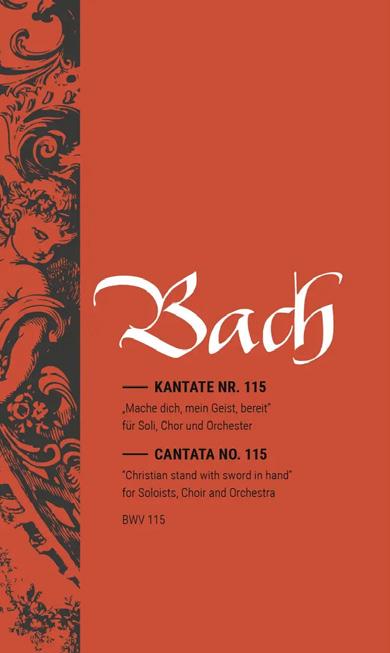
Liverpool North Family 3
Our latest Families of Parishes pilgrimage walk takes us to Liverpool North, focusing on Family Three. This short walk will take you through the areas of Tuebrook, Old Swan, and Fairfield.
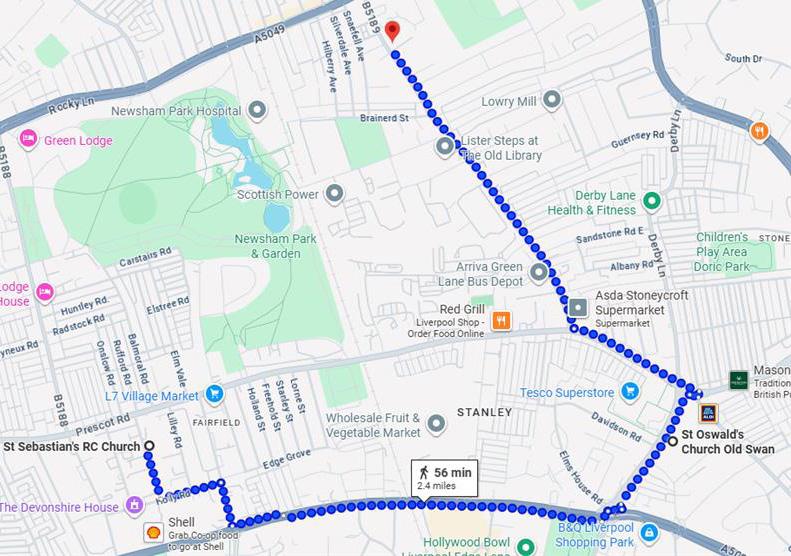
Begin your pilgrimage at St Sebastian’s in Fairfield, located between Prescot Road and Edge Lane – an ideal starting point between two major roads, making it easy to access. Last year, the parish celebrated 120 years since the mission was established, and 110 years since the church was built. If you are doing this on a Sunday, you could begin your pilgrimage with 11am Mass.
Head up Edge Lane and turn onto St Oswald’s Street, and you will soon reach St Oswald’s Church, opposite Tesco in Old Swan. This is the most historic church on the route – its origins date back to 1839, when the mission was first established. Take a moment here and pray for all
of those who have served the church over the years - priests, deacons, parish administrators, catechists, and all the parishioners.
Time: 31 minutes | Distance: 1.3 miles
The final stop on this walk takes you up Prescot Road and then onto Green Lane to St Cecilia’s, who are celebrating 120 years of mission in this jubilee year. This would also be a good place to begin if you’d prefer to walk the route in reverse, as it sits just off West Derby Road - gateway to the city centre, Anfield and Queens Drive. Pause here and pray for the parish, for the local schools in the area, and thank God for another pilgrimage walk completed.
Time: 24 minutes | Distance: 1.1 miles
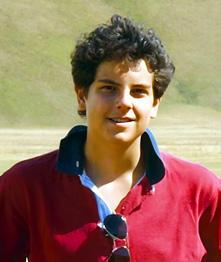
One of the first things that struck members of the West Lancashire Deanery Synodal Council when we first met was the unique geography of deaneries within the archdiocese. Some areas are so populated they have a North and a South - one even had an Inland and a Coastal!
As we discussed our parishes, it also struck us how many of us had not been to each other’s churches, in some cases, not even knowing where they were. How could we even start work synodally - to listen, connect, support and grow - without understanding our geography and demographic?
The solution: Mass, cake and tea. We decided on a Novena leading up to the Feast of the Holy Cross, with evening Masses in our churches across the Deanery.
Starting in Skelmersdale, our first Mass was a St Richard’s on Thursday 5 September. The next night, we moved to St James’ in Orrell, then to St John the Evangelist in Burscough (the Parish of the then-Dean Fr Daley). On Sunday 8, we moved to Wrightington and St Joseph’s, the parish of our current Dean Fr Gregory. We then went rural to St Elizabeth’s in Scarisbrick, and on Tuesday 10, we moved to Fr Daley’s other parish, Our Lady and All Saints, Parbold. Upholland was next, and the Parish of St Teresa’s. On Thursday 12 September, Mass was said at St Marie’s, Standish, before we concluded at St Anne’s in Ormskirk.
Following Mass, each Parish put on tea and cake, giving us the chance to meet and talk to many parishioners. It was interesting to see the Novena grow as people of all the different churches attended the other Masses.
Parishioners gave very similar feedback: Many spoke of the welcome and hospitality they received — “a lovely welcome and warmth offered as we visited each of the churches,” one parishioner wrote. Others reflected on the sense of connection the Novena inspired: “It triggered conversations and ideas between us” and “kept the thread of thoughts and ideas going.”
For several participants, the experience opened new doors — quite literally. “I went to five of the nine Masses. Two of those were in churches I hadn’t been inside before,” one person said. Another added, “Discovering these churches was a great pleasure… the delight and pride with which our priests showed and explained them was wonderful.”
Saint Carlo Acutis
Born in 1991 in London and raised in Milan, Carlo Acutis was a young Italian known for his deep devotion to the Eucharist and his skill with computers. From an early age, he attended daily Mass and prayed the Rosary, describing the Eucharist as his “highway to heaven.” Combining faith and technology, he created a website documenting Eucharistic miracles around the world, helping others grow in devotion to the Real Presence of Christ. Carlo died of leukaemia in 2006, offering his suffering for the Pope and the Church. He was beatified in 2020 and canonised in 2025. His body lies in Assisi, where he continues to inspire young people to use their gifts for God. His feast day is 12 October, which we celebrate for the first time this year.
How do you remember him? His legacy Your legacy Pope Francis left an enormous legacy – but what did his life and teaching mean to you?
p01-17_covers 02/09/2022 15:32 Page 11
Share your memories of this remarkable global leader. And consider: what lasting impact could you leave on the world? yourcatholiclegacy.org.uk/PopeFrancis
Phone Lily on 020 7095 5370 or email her at info@yourcatholiclegacy.org.uk

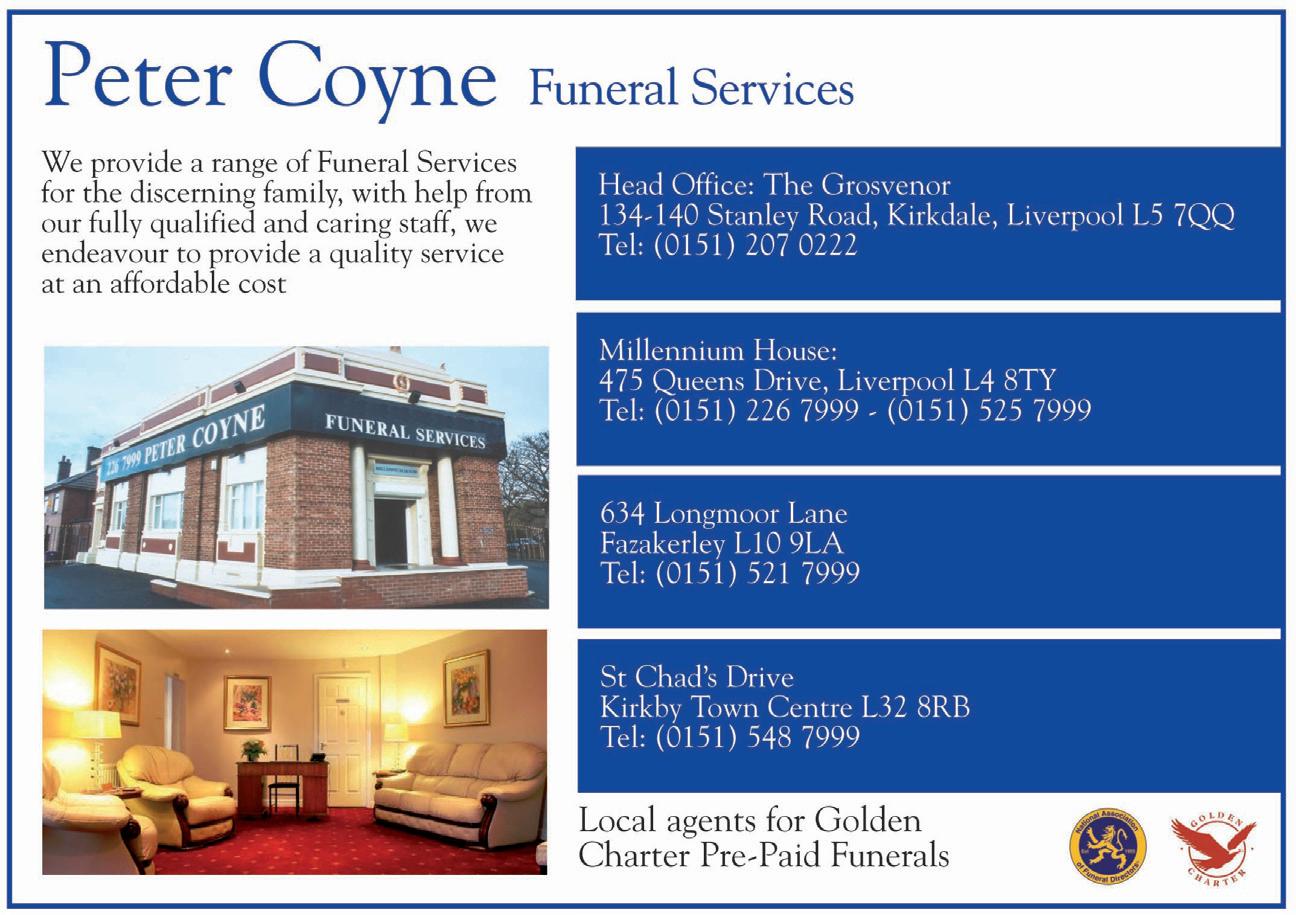

by Dominic Redcliffe
Hello from Rome to you all at home.
At the end of September I started my second year of formation here at the Beda College. Seminary life is once again busy with course lectures, writing assignments and daily liturgies.
Being here means that I’m never too far from the very well-known basilicas in the city, which have become such a focus during the Jubilee Year for the pilgrims who pass through the Holy Doors. However, there are countless other lesser well-known churches that are a joy to discover, especially since they are the resting place of many saints.
On my “bucket list” of things to do is to visit the tombs of those saints who have parishes named after them in our own archdiocese. The parishes in the archdiocese with ‘their’ saint buried here include Saints Peter and Paul with their respective incredible basilicas, St Cecilia, St Catherine of Siena, St Gregory the Great, St Monica, St Sebastian and St Sylvester.
Of course, November begins with the celebration of The Solemnity of All Saints –remembering those holy men and women who have gone before us and are now in their heavenly home. One of my courses is focusing on “Gaudete et Exsultate” (Rejoice and Be Glad) – an Apostolic Exhortation written by Pope Francis - this was something new to me before reading it in class. In particular, one part on “The Saints Next Door”, really made me think. Pope Francis reflected on those people who we meet in our daily lives who do “saintly” things without really knowing it. For example, he mentions parents raising their children with immense love, people who work hard to support their families, or those who care for people with illness and disability. He also reminded us of the many small gestures of kindness and patience that we may feel are insignificant but are examples of holiness.
The opportunity to be introduced to a document such as an Apostolic Exhortation is all part of my formation, as well as being inspired by the lives of those renowned saints that we celebrate not just on All Saints, but also in the “The Saints Next Door”.
Please remember all my fellow seminarians in your prayers. Currently, our six seminarians are studying in Valladolid in Spain, London, and here in Rome. It’s lovely to know that whilst we are away from home, you are praying for us and we are praying for you. Until next time… Arrivederci!
Dominic

by Moses Mui, Training Coordinator

In Luke 10:1-9, Jesus sends out seventy-two disciples in pairs to go ahead of Him, into every town and place He Himself intended to visit. He instructs them to carry no bag, no money, and no extra sandals—relying instead on the hospitality of those they meet and the grace of God. Their task was simple yet profound: to bring peace, to heal the sick, and to proclaim that “the Kingdom of God has come near.”
This passage highlights the very heart of Christian mission. It is not about grand gestures or material resources, but about trust, humility, and active presence. Today, the Catholic Church continues this mission through countless ministries that embody the spirit of Gospel. These ministries are modern expressions of going out “two by two,” bringing the presence of Christ into a broken world.
For example, the St. Vincent de Paul Society operates in many parishes, where laypeople offer practical support to the poor, the lonely, and the marginalized. Visiting homes, delivering food, or simply listening with compassion, they bring the peace and healing Jesus speaks of.
Another vital ministry is Eucharistic ministry to the sick and homebound. Lay ministers bring the Body of Christ to those who cannot attend Mass due to illness or age. In doing so, they extend
the community of the Church beyond its physical walls, bringing both spiritual nourishment and human connection.
Parish youth and young adult ministries are also key to the Church’s mission. These groups help form faithfilled young people, offering retreats, service opportunities, and spiritual guidance. They are places where young people can encounter Christ, build friendships, and be sent forth to live their faith boldly.
Prison and hospital chaplaincy teams, often made up of clergy and lay volunteers, visit those in isolated or vulnerable situations, offering hope, sacraments, and a listening ear. Their presence fulfils Christ’s command to heal and proclaim peace.
Pope Francis often spoke of the Church as a “field hospital”—a place where the wounded are cared for, not judged. This imagery beautifully aligns with Luke 10:1-9. The mission of the Church is not to wait for people to come in, but to go out, meet them where they are, and bring the healing presence of Christ.
In our own lives, the call to mission might not mean traveling far. It may simply mean being present for a neighbour, a coworker, or someone in need. As Jesus sent the seventytwo, He sends us—today—to live and proclaim that indeed, the Kingdom of God is near.
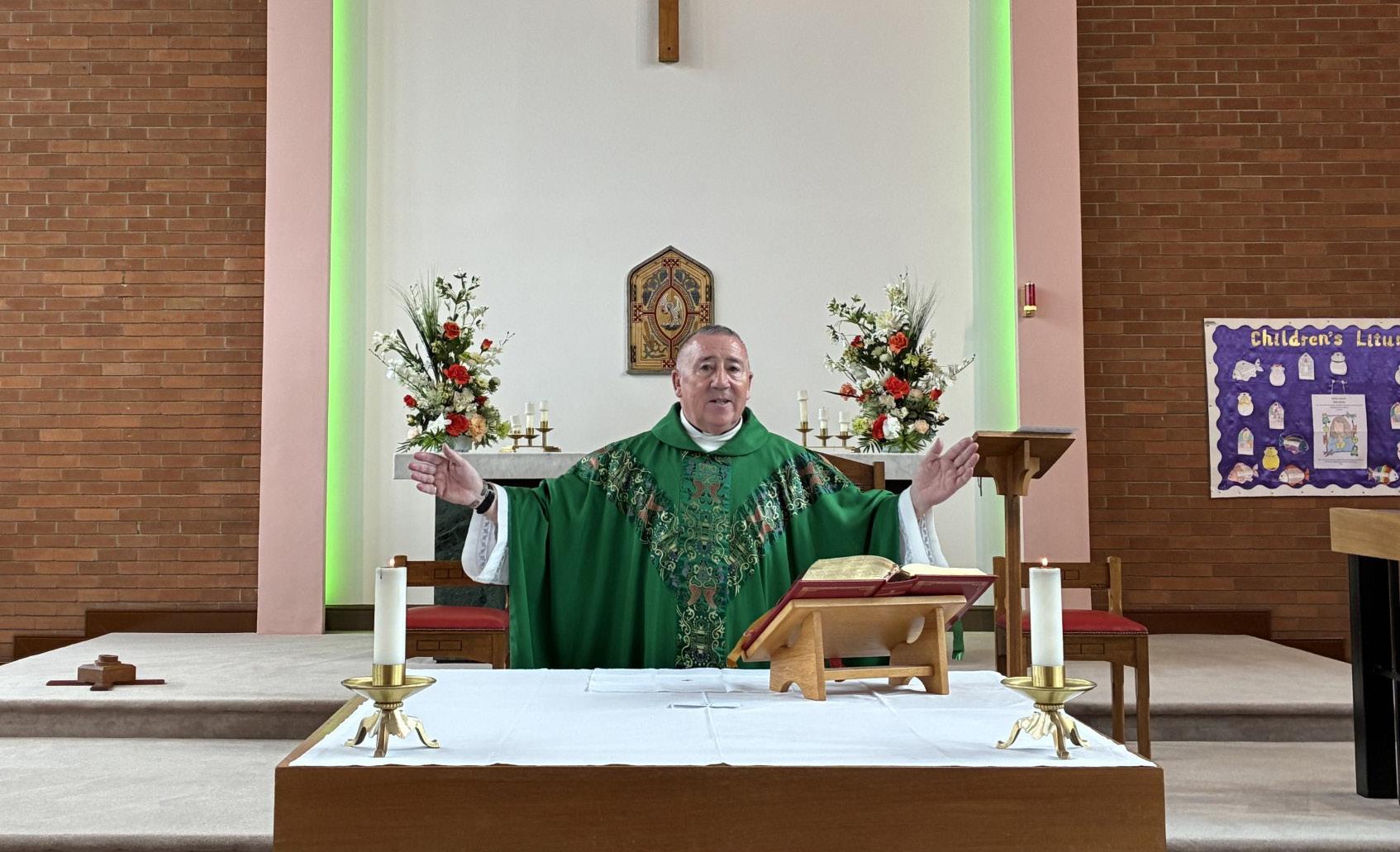
By Simon Hart
In a conversation with Father Henry Nevin, there is one topic that begs to be explored. After all, the recently appointed parish priest of St Julie’s, Eccleston and St Mary and St Thomas of Canterbury, St Helens has a CV that includes a spell as a police officer. Not many priests begin their working life in a Panda car, as Fr Henry did in the 1970s with the Birmingham City Police (now the West Midlands Police), and so here comes that obvious question: how big a change was it?
It is a question that he has clearly heard many times before, yet his reply is no less interesting for it. ‘I always say, “No, it’s not a big change at all” because basically, as a police officer, you’re mainly dealing with people when they need you.
‘And now, as a priest, when somebody’s ill or somebody dies or somebody wants to get married or somebody wants to have a child baptised, the only person they want is the priest. They want you there to help them and to arrange the funeral, the wedding, the baptism, or whatever.’
As well as serving people, the two roles have something else in common, in that they provide manifold insights into the human condition. ‘You deal with all manner of people – from standing next to the Queen one day to arresting someone for burglary or for drunk-driving and, by the nature of the job, you have to treat them all equally without fear or favour,’ he explains of his former role. ‘You meet all sections of society and that broadens the mind. It’s a great lesson in life and in people and some of the things they can get caught up in. They may not have originally set out to do something, but they end up in a life of crime.
‘It’s all about looking at people and understanding people. Obviously, people will tell you an awful lot of lies, so you have to gain the skill of being able to read people in situations and find out what’s true and what’s not. And all of that helps in priesthood. You can understand how people get caught up in things they don’t set out to do, and being able to understand that and hopefully help them is a great asset.’
It was with his ordination in 1999 that Fr Henry embarked on his second act, as a priest. He belongs to the Society of the Divine Saviour, or the Salvatorians, an order with a base at St Joseph’s in Harrow and Wealdstone, one of the biggest parishes of Westminster Diocese. ‘That’s where our community house is,’ he says. ‘We run the parish there.’ The Salvatorians have a small number of their own parishes – hence his previous parish-priest postings in Bristol, Hertfordshire and South Wales. There have also been spells at parishes in Ireland, his home country.
Fr Henry was born in County Wicklow and lived there until the age of 11, when his parents moved the family to Birmingham, and he looks back with special warmth on his four years in the Galway Diocese from 2013-16. ‘It’s the last bastion of real Irishness,’ he says.
And now here he is, for the first time, in the northwest of England, having become the second Salvatorian priest at work in the archdiocese after Fr Paul Harris, the Dean of St Helens and parish priest at Corpus Christi, Rainford, and St Mary’s, Billinge.
Fr Henry arrived initially in a supply capacity, having returned to health after a period away from his duties as he underwent surgery for cancer. ‘I went off to have my cancer treatment and then this was offered,’ he explains. He started in September his full-time role at St Julie’s and St Mary and St Thomas parishes and happily – given those finely honed people-reading skills – he affirms that he has settled well into his new home. ‘I like the camaraderie of the clergy, and the Liverpool people are lovely and very down to earth – my kind of people.’
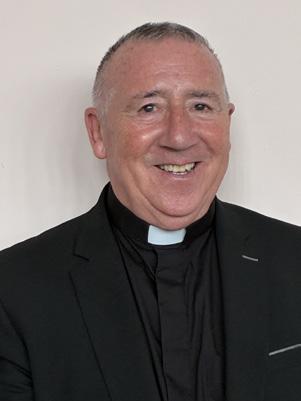
In preparation for the Year of Jubilee, the Archdiocese of Liverpool’s department of education embraced the theme ‘Pilgrims of Hope’ by offering a faith-led trip to Rome for headteachers. Recognising the pressures leaders face, the department prioritised their spiritual formation and wellbeing, providing space for prayer, reflection, and connection.
The group consisted of 36 pilgrims: 26 primary and secondary headteachers, the CEO and three members of the St Joseph’s CMAT, along with the director of education, Joan McCarthy, deputy director of education, Ben McMullen, episcopal vicar for education, Canon Michael Fitzsimons, and four officers from the archdiocese.
Over four days, the group followed a full itinerary. They began with a guided tour of the Vatican, including St Peter’s Basilica and the Holy Door. The tour concluded at the Sistine Chapel, the site of the recent conclave that elected Pope Leo.
On day two, the group attended the Papal audience in St Peter’s Square. Despite the crowds, the Swiss Guard offered the group a prime viewing position. Later, they visited Santa Maria Maggiore, where they processed in silence to view the tomb of Pope Francis before gathering together for evening prayer.
A highlight of day three was a private reception with Archbishop Paul Gallagher, Vatican Secretary for Relations with States. David Hayes, headteacher of St Francis Xavier’s Catholic Academy, arranged the meeting through his connection as a former student of SFX. The group walked through the Apostolic Palace before engaging in a thoughtful discussion with the archbishop about his work in the Vatican, the many challenges in our world, and the mission of the Church in the midst of much turmoil. When asked for a message for the young people in the headteachers’ schools, he simply said: “tell them that their life is worth living.”
The pilgrimage concluded with Mass at the Beda Seminary, warmly hosted by Fr Andrew Unsworth and seminarian Dominic Redcliffe, who later joined the group for a final meal filled with laughter and camaraderie.
This deeply moving experience renewed the leaders’ sense of vocation and mission, strengthening their hope for the young
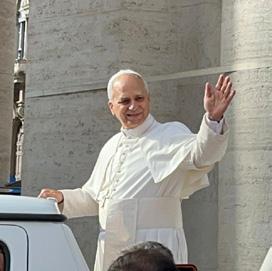
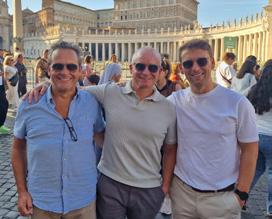
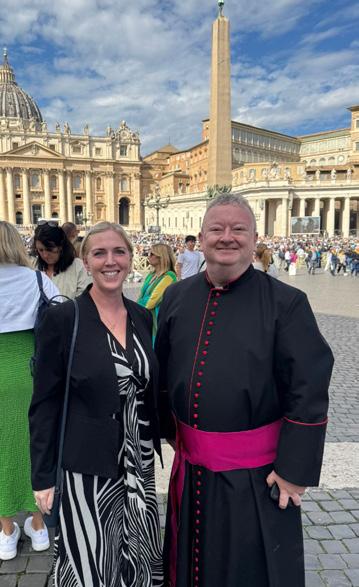
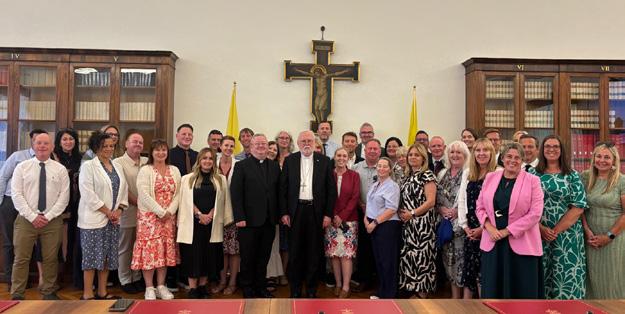
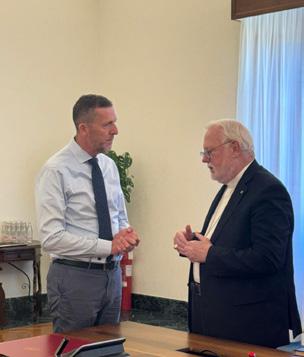
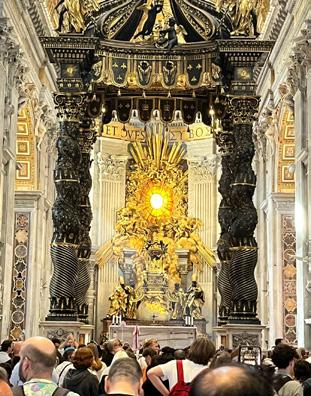
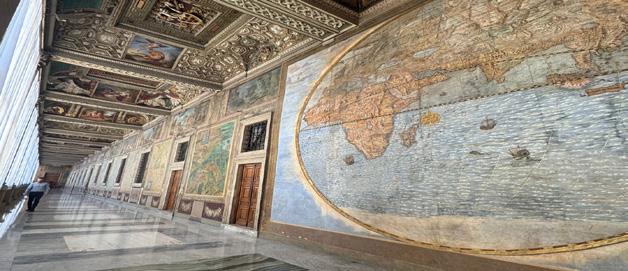
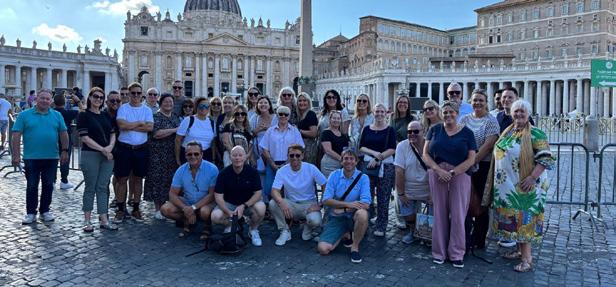

St Gerard’s Primary School welcomed Archbishop John Sherrington from the Archdiocese of Liverpool this week for a momentous occasion – the official opening and blessing of its new prayer room. The archbishop was met with a warm reception from students and staff, who gathered in the school hall for a special assembly.
The assembly featured heartfelt presentations from pupils, who offered gifts symbolizing the school’s spirit of community and faith. Archbishop Sherrington took time to speak with the children, encouraging them to continue nurturing their spiritual lives and to use the prayer room as a space for reflection, gratitude, and connection.
Following the assembly, the archbishop toured the school, visiting the newly created prayer pod and the tranquil prayer garden. These areas, designed to provide students with quiet spaces for contemplation, feature reflective seating, prayer stations, and inspirational quotes. Pupils proudly shared their experiences of using these spaces, explaining how they help them focus, pray, and find calm during the school day.
Archbishop Sherrington also visited several classrooms, engaging with students about their studies and their faith journeys. He then returned to the prayer room, where he blessed the space, officially opening it for the school community. The blessing was met with joyful applause from students and staff.
Headteacher Mr Landrum said, “It was an absolute honour to welcome Archbishop Sherrington to St Gerard’s. Our new prayer
room and garden are wonderful additions to our school, giving our children a peaceful space to reflect, pray, and connect with their faith. Having the archbishop here to bless the room made it a truly memorable day for everyone.”
The new prayer room at St Gerard’s is part of the school’s ongoing commitment to integrating spiritual development into everyday learning. With its calming environment, welcoming design, and inspirational features, it promises to become a cherished space for students and staff alike.
The archbishop’s visit was not only a celebration of the new facilities but also a reminder of the importance of faith, reflection, and community within the life of the school.
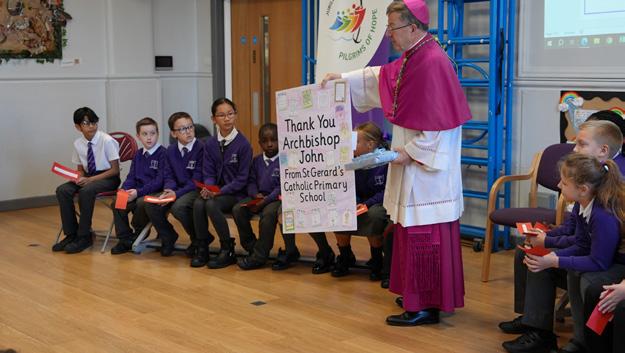
Be like the sunflower that follows every movement of the sun, and keep your eyes always turned towards our good God,”
St Julie Billiart
The British Federation of Notre Dame (de Namur) Associations (BFNDA) connects past pupils, students, staff, and anyone linked to Notre Dame schools and colleges across the UK. Founded by St Julie Billiart in 1804 to educate daughters of the poor, the Notre Dame order has evolved. Some schools have closed, while others have merged into new institutions like Liverpool Hope University (where Mount Pleasant College of Education joined with two other colleges). Many still thrive, upholding the Notre Dame ethos and St Julie’s motto: “Ah, qu’il est bon, le bon Dieu” (“Ah, how good he is, the good God”), and now also educate boys.
BFNDA was formed in 1928 to bring together past pupils, “for mutual assistance”, “for the furtherance of Catholic education and interests”, “to formulate and promote movements requiring the support of educated Catholic women” and “the welfare of Notre Dame (de Namur)”.
Its annual ‘Weekend Away’ combines an AGM with social activities such as local outings, shared meals, and guest speakers – offering a chance to reconnect and build new friendships.
The current federation has an annual ‘Weekend Away’, which combines an AGM with social activities such as local outings, shared meals, and guest speakers – offering a chance to meet old friends and colleagues and form new friendships with people from elsewhere.
A very important aspect of the organization is the support it has given and continues to give to Notre Dame projects around the world. The sisters have communities dedicated to helping under-privileged and frequently dangerous areas. There are projects which bring basic commodities, such as fresh water, to very poor areas as well as education, often where there is violent opposition. The achievements of alumni groups which support the missionary work of the Notre Dame order and fulfill the aims of St Julie Billiart are greatly enhanced when co-operating through BFNDA.

From STEM researcher to science teacher, nine years ago Dr Jan Baloyo swapped publishing international research papers for lab coats and lesson planning and has not looked back since.
“During my PhD, I delivered undergraduate teaching and those experiences showed me how much I enjoyed inspiring and mentoring learners. I realised that I found my greatest fulfilment not just in conducting research, but in communicating it,” Jan explained.
Wanting to pursue a career in teaching, Jan embarked on a programme designed to integrate STEM researchers into education, allowing her to combine her academic background with her passion for widening participation in STEM.
However, Jan has not left her research background behind and her roots in academia continually influence her teaching practices.
She said: “I model high standards of academic rigour and teach students how to think critically and evaluate evidence. I also bring a research-informed mindset to curriculum planning which allows me to link topics across disciplines, and design enrichment activities that stretch high-attaining students.”
Jan joined St John Bosco Arts College at the start of the academic year and supports the development of the science department’s curriculum, resources and teacher guides. A former science literacy leader at her previous school, Jan’s passion to enhancing students’ literacy skills continues to be a focus and she has introduced subjectspecific glossaries.
When asked what she enjoys most about her role, Jan said: “It’s the moment when complex ideas click for students. Science allows students to be curious, analytical, and creative all at once, and I love being able to guide them through that process.”
Community plays a big part in Jan’s life, both professionally and personally as she leads Sunday School at her local church. She explained: “My involvement in both spheres reinforces my belief in education as a collective, collaborative and valuesbased venture.”
As she enters her tenth year of teaching, Jan is motivated by seeing her students grow academically and personally, and is passionate about making STEM accessible for all learners.
She said: “The impact we have as teachers is long term and deeply meaningful, and that continues to inspire me daily.”

St Wilfrid’s Parish hosted the first Catholic School Partnership Community Welcome Mass at Saints Peter and Paul Catholic School on the evening of Wednesday 8 October 2025. It brought together staff, governors, and leaders from all Catholic schools within the Widnes parish for a first-of-itskind gathering.
The Welcome Mass provided a vital opportunity for local Catholic educators to celebrate their shared mission in providing an all-through Catholic education for children in Widnes. It aimed to help strengthen the collaboration between the seven primary schools and secondary school to positively benefit families and pupils transitioning to secondary education.
Danielle Scott, principal of Saints Peter and Paul, said: “This gathering has been a wonderful opportunity to show the unity and strength of Catholic education in our community. To see staff from schools all over Widnes come together in such a special way made this such a memorable occasion, and I can’t thank the staff and governors from all schools enough for joining us. We are so pleased to have given our primary partners the opportunity to experience our school’s warm and welcoming environment for themselves too, and we look forward to hosting another gathering like this in future as it showed just how important and valued the relationships between our schools and the Parish are.”
Father Mark Moran, parish priest at St Wilfrid’s, added: “We were delighted to invite staff and governors from across our Catholic schools to join us for this startof-year Mass and welcome event. This gathering was about community and shared purpose, and everyone, regardless of faith, was warmly welcomed to be part of this meaningful celebration. We hope this event marks the beginning of a really positive and purposeful year ahead for Catholic education in Widnes.”

St Joseph Catholic Multi Academy Trust (SJCMAT) is proud to celebrate The Trinity Catholic Academy’s designation as an official Steplab Coaching Hub – a prestigious recognition of its excellence in teacher development and leadership in instructional coaching.
Steplab Hubs are schools around the world that utilise the Steplab platform in innovative and impactful ways to drive exceptional professional development. Each hub opens its doors to educators seeking to learn how evidence-informed coaching can transform teaching and learning. Visitors observe live coaching, explore implementation systems, and share reflections with other professional development leaders –helping to build a network of schools committed to continual improvement.
Instructional coaching lies at the heart of SJCMAT’s approach to staff development. Every teacher across the trust engages in regular, high-quality coaching to refine practice and enhance outcomes for pupils. The Trinity Catholic Academy, under the leadership of Steplab-accredited coaching lead Stevie Toner, exemplifies this commitment. Through consistent, evidencebased coaching, the team has fostered a culture where every adult is a learner and every teacher is supported in their growth.
“This is a whole team achievement,” said Stevie Toner. “Every adult in the school is a learner, and every teacher is supported to grow. Our staff support one another, reflect together and are always looking to improve.”
The impact of this approach is visible across The Trinity – in classrooms, through collaboration, and in the confidence it fosters. As a Steplab Hub, Trinity now shares its expertise with visiting schools, supporting them in implementing high-impact professional development.
As CEO Andrew Truby affirms: “We guarantee that every teacher benefits from instructional coaching at least once per fortnight as the best form of professional development.”
Through Trinity’s leadership, SJCMAT continues to strengthen its mission: cultivating exceptional teachers to deliver a worldclass Catholic education for every child.

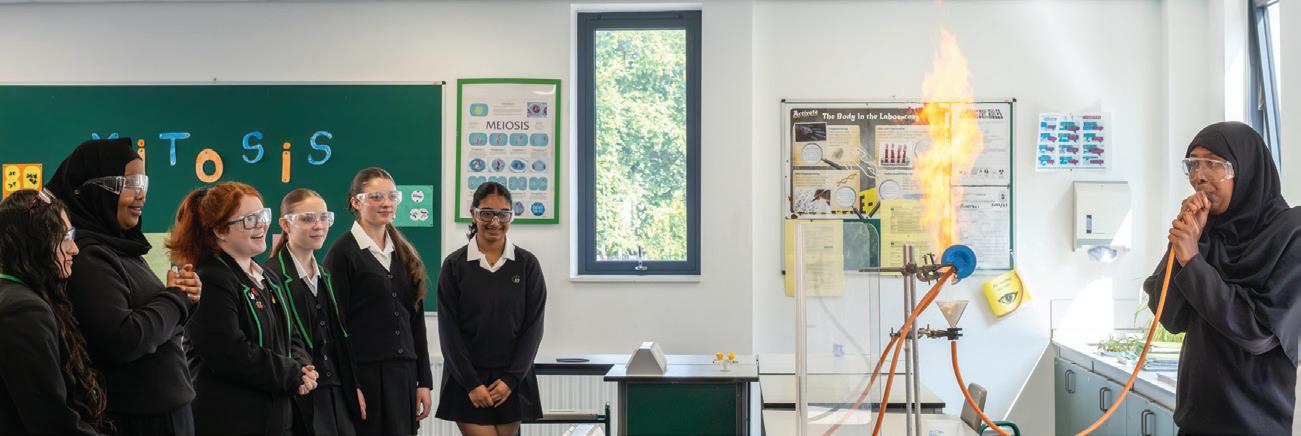








20th November 5-7pm
Studies consistently show that girls in single-sex schools achieve higher academic outcomes, are more confident, and feel empowered to pursue their interests.
“The education of the poor is not a favour but a duty”
In his recent apostolic exhortation Dilexi Te (“I Have Loved You”), Pope Leo XIV speaks with great tenderness about love for the poor and the call for the Church to make that love visible in every aspect of its life. Among his words, I was particularly struck by his reflection on education - especially this passage, which so beautifully expresses what Catholic education is called to be.
The Heart of Our Mission
Catholic education has never been simply about passing exams or preparing for work. It is about forming the whole person - mind, body, and spirit - so that every young person can grow in confidence, faith, and a sense of purpose. Pope Leo reminds us that in teaching children, we help them to recognise the loving presence of God in their lives and in the world around them.
That is a sacred responsibility. Every classroom, every conversation, and every act of encouragement can become a moment of grace - a chance to help a child know that they are valued and loved by God. The Pope’s words also challenge us. He speaks of education as a right, not a privilege - a truth that places before us a clear moral task. Catholic schools must always be places of welcome, particularly for the poor and the vulnerable.
This is something the Church has modelled for centuries. The great saints and founders of Catholic education, like St John Baptist de La Salle, built schools for the children of working families who had little else. Today, we are called to do the same - to ensure that no child is excluded because of their background or circumstances.
Pope Leo also reminds us that the poor are not only those we serve; they are also our teachers. When we listen to the stories and struggles of families who face hardship, we encounter Christ Himself. Their faith, resilience, and hope teach us what the Gospel truly means in daily life.
In our schools, this calls us to foster communities of encounter - places where everyone feels seen, heard, and respected. Teachers and pupils learn from one another. Faith grows in dialogue, and love becomes real through relationship.
Faith in Action
Education, Pope Leo says, is part of the Church’s wider work for justice. That means we cannot stop at good intentions within our own walls. We must also look at the structures and systems around us - at how opportunity, funding, and support are distributed - and ask whether they reflect the Gospel values we hold dear.
When Catholic schools speak up for fairness, when we insist that every child deserves the same chance to flourish, we are living out the Gospel in action.
As I reflect on the Pope’s message, I find both comfort and challenge. Comfort, because his words affirm the sacred value of what all in our schools and colleges do each day. Challenge, because they call us to keep stretching our hearts wider - to ensure that every young person knows they are loved, capable, and made in the image of God.
Pope Leo XIV reminds us of that love for the poor is love for Christ Himself. In our schools, that love is lived out daily - in patient teaching, quiet encouragement, and faithful service. My prayer is that we continue to make our schools and colleges places where the Gospel is not only taught, but seen, heard, and felt in the life of every child.
Joan McCarthy Director of Education, Archdiocese of Liverpool
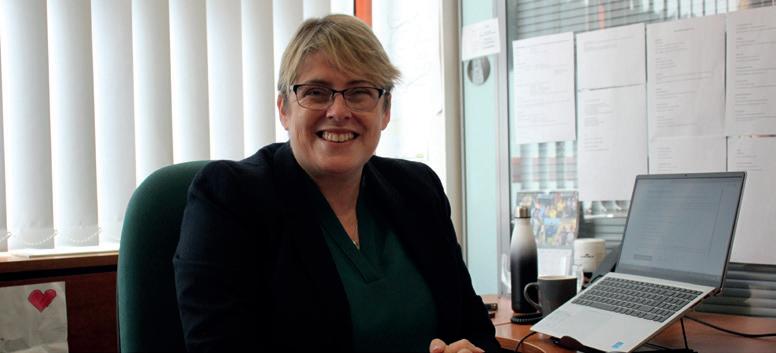
On Sunday 5 October, Olwen Collingwood, teacher of mathematics at St Mary’s College, Crosby, embarked on a pilgrimage around Cardiff.
She said: “Running the Cardiff Half Marathon was more than just a race - it was a kind of pilgrimage. I set out with a purpose in my heart: to raise funds for Pancreatic Cancer UK, and to remember my dad.
“Runners lined up beside me, each carrying their own story. It felt like a modern-day pilgrimage, where thousands of strangers shared a common path, united by movement, memory, and meaning.”
Olwen explained: “ As the route wound through the familiar streets of Cardiff, I found myself smiling at old memories, which carried me through the first stretch. But as the miles unfolded, the experience deepened into something quieter and more spiritual. My breathing became a kind of prayer. The refreshment stations felt like holy pauses - small places of grace and renewal - and the music and cheers along the roadside were like hymns of encouragement. Somewhere along the way, the run shifted. It wasn’t just about honouring my dad anymore –it became a way of being with him.
“There were moments when the run felt hard, but then someone would pass with a kind word, or I’d catch sight of a sign that said, “You’ve got this,” and it was enough to keep going. Those small gestures reminded me that we weren’t running alone.”
She added: “ What struck me most was how unifying a sport running is. Whether elite athletes or first-timers, we all moved forward together. The medal at the end was a tangible reward, but the real prize was the sense of belonging, of having journeyed through something meaningful with others.
“My pilgrimage through the streets of Cardiff had become a journey through memory, love, and faith. As I crossed the finish line, I whispered a quiet prayer of thanks - for strength, for my dad, and for the sense that God had been running beside me all along. As I looked back on the day, I realised that grief and hope had found a way to run side by side.”

As part of their transition into the All Hallows community, Year 7 pupils took part in a series of faith-filled events exploring the theme ‘Building the Kingdom of God’.
Their journey began with retreat days at St Mary’s Church, Lowe House, St Helens, led by Fr Simon and Ellie from the Animate Archdiocesan retreat team. Pupils took part in team challenges such as the ‘Egg Drop’, ‘Play-Doh Challenge’ and a bridge-building activity, each designed to explore ideas of protection, fairness and unity. Supported by their Year 10 buddies, pupils reflected on how they can use their gifts to make the world a better place. These retreats helped lay the spiritual foundations for the highlight of the transition programme – the Year 7 Mass of Welcome.
The Mass was a joyful and moving celebration, concelebrated by Fr Michael, Fr Ian and Deacon Bill from the school’s partner parishes. It marked the formal welcome of new pupils into the All Hallows family. The Gospel of the Mustard Seed reminded everyone that even the smallest act of kindness can grow into something great.
Each form group took part in a special procession, placing their ‘Building the Kingdom’ challenge cards before the altar as a sign of commitment to living out their faith. Beautiful music from the pupil choir filled the hall, and the post-Communion reflection, ‘Sign Your Cross’, offered a moment of deep prayer and unity.
Together, the retreats and Mass captured the heart of the All Hallows mission – to nurture faith, celebrate community and inspire every pupil to help build the Kingdom of God on earth.

Students and staff at The Academy of St Francis of Assisi, Kensington, recently came together to celebrate the life and teachings of the school’s patron saint, St Francis of Assisi.
St Francis of Assisi is the patron saint of animals and the environment, and his message of kindness, humility, and care for all creation continues to inspire the academy community.
The day began with a special form-time reflection, during which students explored St Francis’ teachings and considered how they can live out his values in their own lives.
Students considered the ongoing impact of climate change, particularly on less fortunate communities across the world, and reflected on their own responsibility to protect the planet.
An engaging gallery display in the main corridor of the academy invited students to reflect on the question, ‘What would Francis do?’. Through powerful images of animals in need, the display encouraged students to think deeply about animal welfare and the importance of compassion in everyday life.
In the true spirit of St Francis, the academy community also came together to support its school food bank, with parents, students, and staff donating items to help local families in need.
A highlight of the day was a visit from Boo’s Mobile Zoo, which brought a selection of animals for a special educational display. Year 7 students enjoyed learning about the care, needs, and conservation of different species, reinforcing the values of stewardship and empathy that lie at the heart of St Francis’ teachings.
Year 7 student, Ellie, said: “It was so nice to see the animals and hear about how they are protected in the wild.”
Headteacher of The Academy of St Francis of Assisi, Ms Teresa Bleasdale, said: “Feast Day is always a special time for our academy community. It reminds us of the importance of kindness, generosity, and respect for all living things, values that St Francis lived by and that continue to inspire us every day.”

Broughton Hall Catholic High School Sixth Form is proud to celebrate another year of exceptional A-level results, confirming our position as the top-performing Catholic girls’ school for A-levels in 2025. This summer’s success reflects the dedication, ambition, and resilience of our students, supported by our outstanding teachers and pastoral team.
Our Sixth form students have secured an impressive range of destinations, including highly competitive degree programmes in medicine, law, teaching, creative arts, geography, and STEM subjects, alongside a growing number progressing to degree apprenticeships and employment opportunities. These results demonstrate not only academic achievement but also the sixth form’s commitment to preparing every student for life beyond the classroom.
At Broughton Hall, students benefit from a bespoke curriculum and small class sizes that allow for personalised support and individual attention. The curriculum is designed to be flexible and ambitious, offering a broad range of academic and vocational subjects to suit every learner’s aspirations.
Broughton Hall is particularly proud of bespoke pathway programmes – including our medical, creative, and teaching pathways – which provide targeted guidance, specialist
enrichment, and tailored mentoring to help students progress into their chosen careers. These are complemented by a vibrant enrichment offer that includes work experience opportunities, guest speakers, leadership roles, and community involvement.
A key strength of Broughton Hall Sixth Form is the strong sense of community. Students describe feeling a true sense of belonging, nurtured through outstanding pastoral care, daily tutor support, and a close partnership between staff and students. The student leadership programme empowers young women to develop confidence, independence, and a sense of responsibility –qualities that serve them well at university and beyond.
Rooted in its Catholic ethos, Broughton Hall provides a nurturing and values-led environment where each student is encouraged to “shine their light” and reach their full potential – academically, personally, and spiritually.
As the sixth form celebrates this year’s achievements, it warmly invite prospective students and parents to get in touch to find out more about joining the post-16 provision in September 2026. Come and experience first-hand the welcoming, ambitious, and faith-filled community that makes Broughton Hall such a special place to learn and grow.
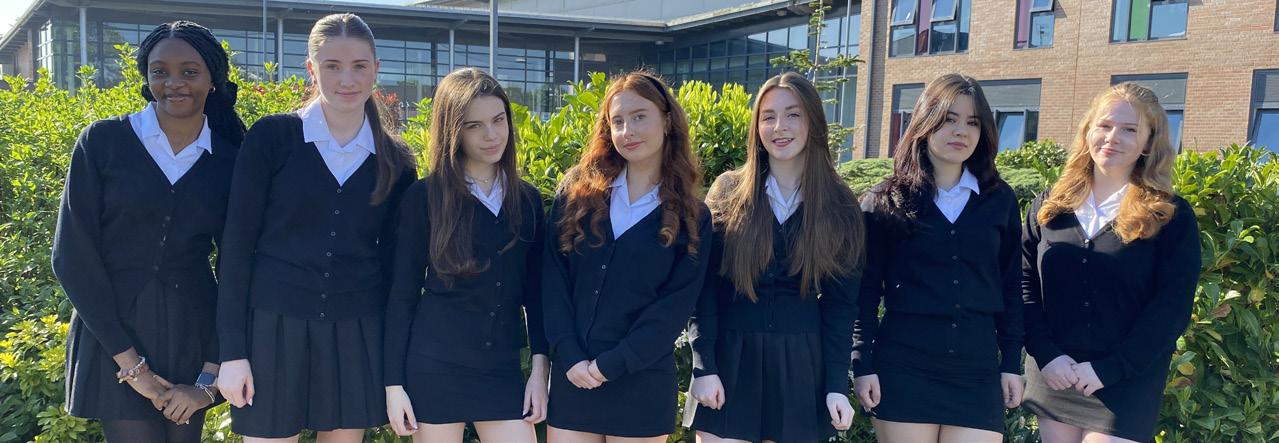
Between 22 and 26 September St Gregory’s Catholic High School celebrated its Mission Week.
As part of celebrations, pupils were warmly welcomed to attend ‘Breakfast with God’ in the chapel each morning before school. This special time offered a quiet space for reflection, prayer, and gratitude.
Throughout the week, pupils took the opportunity to write down what they were thankful for, filling the chapel with heartfelt messages of appreciation and joy.
Mrs Whitlow said: “It has been truly lovely to see so many of our pupils take part in this meaningful start to their day, embracing the spirit of Mission Week with sincerity and openness.”
St Gregory’s celebrations also included a Service of Reconciliation for each year group and performances from RISE Theatre, a professional Christian theatre company with a passion for delivering exciting, original, transformative theatre.


This month, 11 Catholic primary and secondary schools from across the Archdiocese will come together at the Liverpool Anglican Cathedral for the glittering Educate Awards ceremony.
Now in its fourteenth year, the Educate Awards, in partnership with ASL Group, is the biggest and most prestigious celebration of education in the North West.
The shortlist celebrates inspirational teachers, dedicated support staff and visionary leadership teams, who continue to make a lasting difference in their school communities.
Director of education for the Archdiocese of Liverpool, Joan McCarthy, said: “I am delighted for all the schools, academies, colleges, and multi-academy trusts nominated for the Educate Awards. A special word of congratulations goes to our Catholic schools and colleges who have been shortlisted. The Educate Awards is always a wonderful evening celebrating all that is good about education across the North West. It shines a light on the dedication, creativity, and commitment of our educators and students alike. Good luck to the judges, they certainly have a tough choice ahead!”
Amongst those shortlisted, includes St Francis Xavier’s Catholic Academy for the Careers & Enterprise Award, sponsored by LCR Careers Hub, following its careers curriculum being identified as a secure area of strength for the school and the achievement of the Quality in Careers Standard.
St John Bosco Arts College has also been shortlisted in two categories: Most Impactful Communications Award, sponsored by CPMM Media Group, and Outstanding Arts in Secondary School.
Judges of the Most Impactful Communications Award, a particularly competitive category, said: “The school has
introduced some great initiatives, including a student editorial team with representatives from all year groups.”
On a mission to become a plastic free school, The Academy of St Nicholas has been shortlisted for Outstanding Commitment to the Environment & Sustainability with judges noting the strong community involvement and selection of student-led activities.
Winners will be announced on Friday, 14 November during a spectacular evening, featuring show-stopping live performances from schools across the region, a three-course gala dinner, and the highly anticipated awards ceremony itself.
The full list of shortlisted schools across the Archdiocese of Liverpool includes:
• Cardinal Heenan Catholic High School
• Hope Academy
• Our Lady and St Swithin’s Catholic Primary School
• Our Lady of Compassion RC Primary School
• Our Lady of Lourdes Catholic Primary School
• St Edward’s College
• St Elizabeth’s Catholic Primary School
• St Francis Xavier’s Catholic Academy
• St John Bosco Arts College
• St Mary’s Catholic Junior Academy
• The Academy of St Nicholas
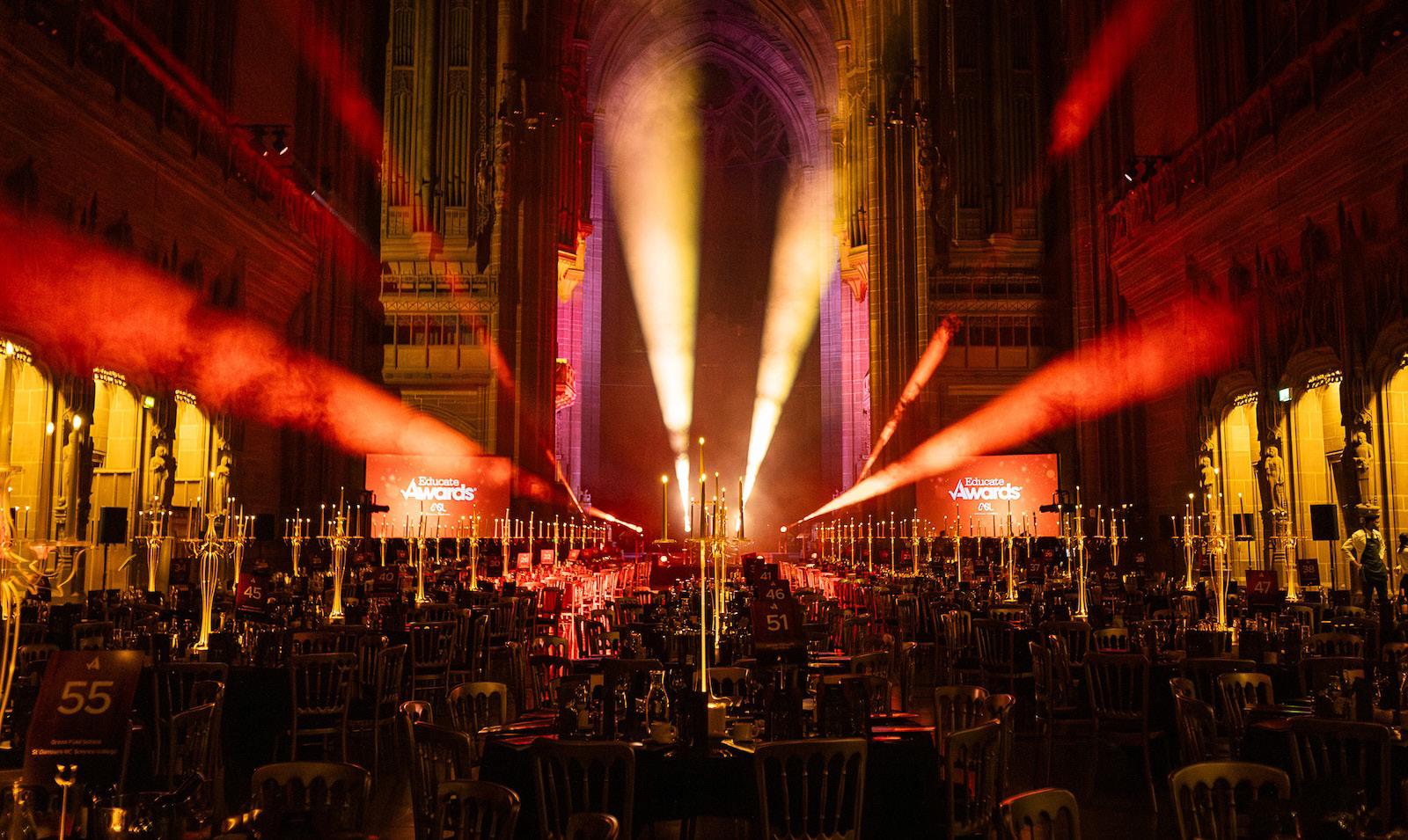
Father Simon Gore reflects on a busy start to the autumn term for the team from Animate Youth Ministries.
By the time you read this, the first half-term of the 2025/26 academic year will be over. As regular Pic readers will know, this term is generally one of our busiest times for retreats and missions.
This academic year has started off in the usual, moderately frantic way with retreats and mission days and even a full school mission. So, as the Olympic diver said, “Let’s jump straight in!”
We had a nice couple of days at St Augustine’s High School, St Helens, where we worked predominantly with the Year 7 and Year 8 groups, but also had the chance for a small amount of time with the older years as well. It was a good way to start the year and get back into the swing of things.
We then headed over to Christ the King in Southport for two days with the new Year 7 cohort. We do tend to get a lot of schools wanting a Year 7 retreat in the autumn as they like their new pupils to spend time together outside school (or inside school but in a different setting) and consider what it means to be at that particular school and what its ethos is. This was the case with both St Augustine and Christ the King as we thought about the pupils’ new beginnings at their new home.
Next, we had a week back at Lowe House working with pupils from Archbishop Beck. Again, at the request of the school, we focused on what makes their new community special. However, in a nice change to the routine, the school asked if we could spend part of the day speaking about Archbishop Beck and Saint Bonaventure (after whom the previous school was named).
We ask each school to pick the theme they would like us to explore, and at this time of year, we can have “New Beginnings” or follow the school’s request for a theme and then tailor our day to it. Fortunately, we have a large selection of resources that fit any theme you can think of.
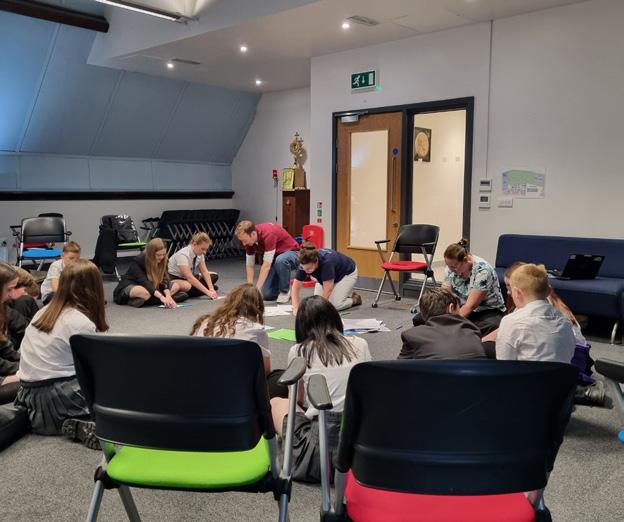
This opening half-term has also seen us undertake a road trip to Blackpool. We have been working with St Mary’s Academy there for a number of years now. They have been coming to us for retreats and, last year, asked if we might be able to assist them with a school mission they had planned. And so, in late September, off we went to Blackpool. Our team leader, Lauren Lynch, is from Fleetwood and her family kindly put us up while we commuted into the school for a week of mission.
We all love missions. The work is different from what we usually do – with lots of stage work and larger group presentations – and this one had the theme “Be filled with joy”.
Back at St Helens, we then had a primary retreat and a special Jubilee retreat, for anyone wishing to attend, and then two days in Horwich with St Joseph’s High School. As I type this, we have just finished three days with All Hallows, Penwortham, here at Lowe House, and a day at The Edge in Wigan with the Year 7s from St John Fisher.
And by the time you read this, we’ll have also completed activities with St Mary’s, Crosby, and St Julie’s, Woolton, and a week with St Gregory’s, Warrington. As I said earlier, a slightly frantic start to the year!
Moving from out-of-house to in-house retreats really does change the way we do things and what we can do. And as we always tailor our activities to the school, we can have resources lining the corridors for the themes that week. Finally, you might have noted that Blackpool and Horwich are both outside the archdiocese, and while we do try to prioritise our own diocese and not stray too far away, we think it is a positive for us as a diocese – a sign that we must have some good will beyond Liverpool – to have schools elsewhere asking us to work with them.
I hope you might keep us and the young people we work with in your prayers, as we will keep you in ours.

I can’t believe that November already. this year gone?
October was a very busy month for most foundations. Most of you have held coffee afternoons and evenings recently and organised bring-and-buys to raise money for Macmillan Cancer Support, which is a very worthy cause that we support annually.
October was the month of the Holy Rosary, and we were asked this year by Pope Leo XIV to pray the rosary for world peace. I know we all made the effort to do this. At the end of October, 80 ladies from all our UCM foundations, together with members from the Salford and Shrewsbury dioceses, had a retreat day at the Ladyewell Shrine in Preston. Our chaplain, Father David Potter, celebrated Mass in the church on arrival, then in the afternoon we had Benediction in the chapel, which was very prayerful and peaceful. The weather was good too, and everyone enjoyed it.
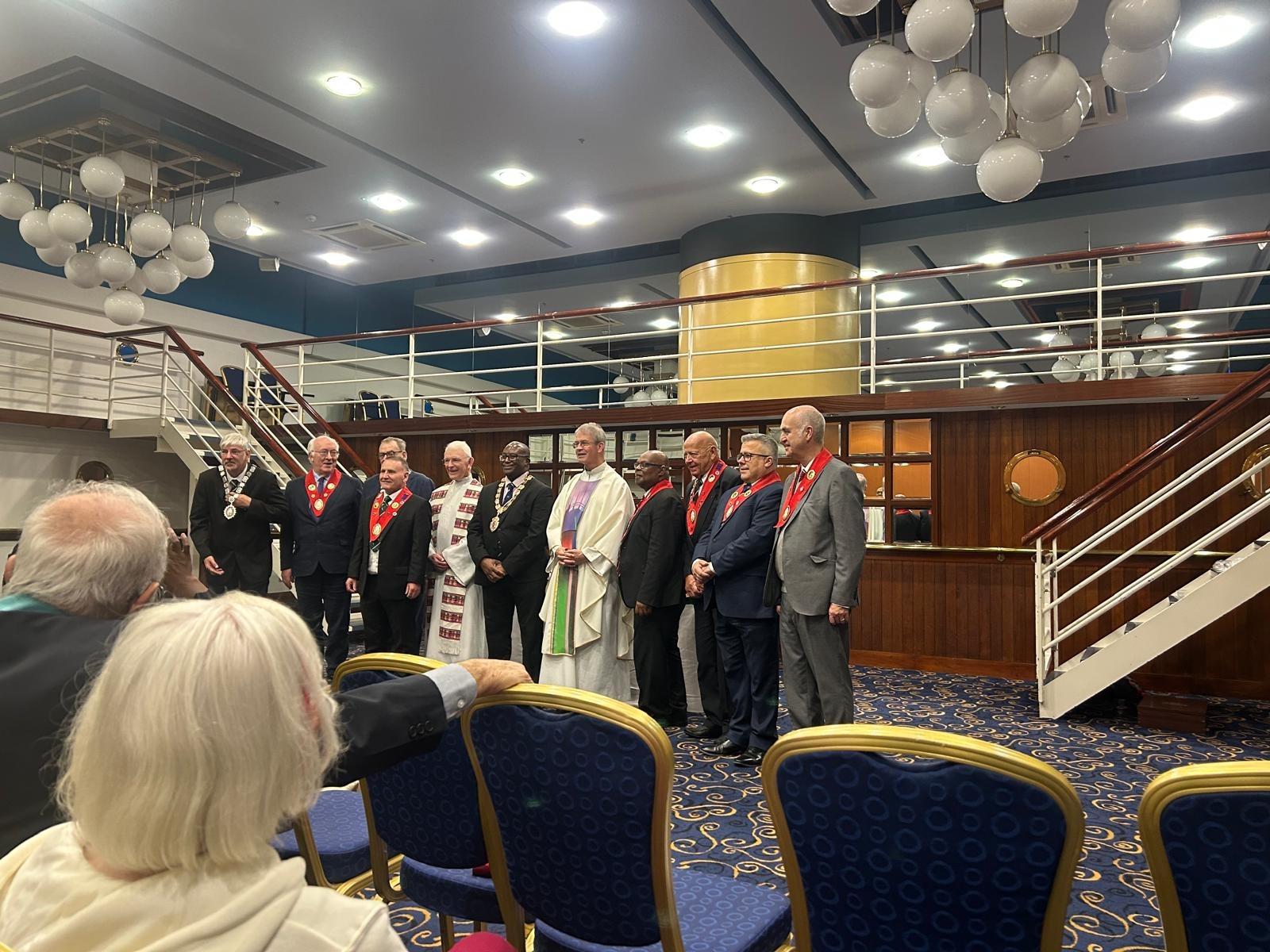
November is the month of the Holy Souls, when we remember all our loved ones who have gone to the Lord. We remember our deceased UCM members and their families, and we also wear our poppies with pride as we remember those who gave their lives in wars so that we could live in peace. Eternal rest grant unto them, O Lord.
Our next bi-monthly Mass is on Wednesday 12 November at Blessed Sacrament, Aintree. Please make every effort to attend. If you have any selection boxes for Barbara, please bring them with you.
Maureen Finnegan, Archdiocesan Deputy President
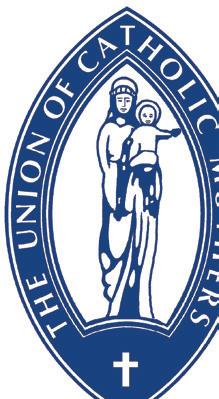
installation of the board of directors. Our thanks go to the Archbishop Emeritus of Liverpool, Malcolm McMahon,
Brother Bill Formby from Council 9 recently celebrated his 90th birthday. A retired police inspector, Bill has been in the KSC for over 50 years and marked his birthday with a special Mass at Christ the King, Childwall.
On Saturday 11 October, at an evening to celebrate the centenary of Council 146, grand knight Tony Hogan presented donations to six charities or bodies to support their work. These were SWACA (Sefton Women’s and Children’s Aid), the Sefton School Workers’ Trust, the SVP, Our Lady of Lourdes Primary School, Compassion Acts and ACROSS.
dinner; delegates during the Supreme Council; and the board of directors with Bishop Tom.
Council 493 were delighted to support the son of Brother Paddy Smith in attending the Liverpool Youth Pilgrimage to Lourdes. Gabriel Smith, pictured here assisting Brother Rosario Bracchitta from the same council, had a busy week with the yellow shirts and we pray that he will participate in future pilgrimages.
• Council 9 are holding their annual blacktie dinner at Liverpool Cricket Club on Friday 31 October.
• Council 146 are holding their Christmas bingo at Sacred Heart parish centre, Liverpool Road, Ainsdale on 4 December (7.30pm).
I hope you have found this information interesting. If you are interested in finding out more about The Knights of St Columba or arranging a visit to your local council meeting, then please don’t hesitate to contact me by email. Philonline2@btinternet.com Phil Woods, Provincial Grand Knight - Province 2
By Ultan Russell, Archdiocesan ecumenical officer
The Archdiocese of Liverpool and Christian friends of all denominations were appalled by the 2 October attack at Heaton Park Synagogue in Manchester. Archbishop John Sherrington sent the following message to Barry Levene, chair of the Merseyside Jewish Representation Council (MJRC):
Dear Barry,
I was deeply saddened to hear the news about the attack on the Jewish community in Manchester, on Yom Kippur, the holiest day in the Jewish calendar.
On behalf of the Archdiocese of Liverpool, I extend our thoughts and prayers to all those affected by this horrific incident. We stand in solidarity with our Jewish brothers and sisters during this time of grief and distress.
Acts of violence and hatred have no place in our society. We continue to pray for peace, unity, and healing across our communities and throughout the world.
I assure the Jewish community in Liverpool of my prayers.
Yours sincerely, +John Sherrington, 3 October 2025
The MJRC acts as an umbrella organisation for communal cohesion and has formal links to the Board of Deputies and the Jewish Leadership Council. Locally, activities include:
• Representing the Communities of Liverpool, and its neighbouring areas.
• Acting as a facilitator, promoting co-operation and collaboration within the Jewish community, as well as between the community and the statutory authorities.
• Facilitating and promoting Jewish educational, cultural, and religious activity.
• Representing the civic, cultural and faith life of the wider Merseyside community.
• Facilitating and promoting interfaith and inter-ethnic understanding and harmony.
The MJRC made this statement after the shooting:
“As we emerged from the solemn reflections of Yom Kippur, we were deeply shocked and saddened by the distressing news from Heaton Park Synagogue.
“Our hearts are with the Jewish community in Manchester and with Jewish communities across the United Kingdom. Every person should be able to enter a house of worship without fear –free to pray, gather, and seek peace without threat to life or safety.
“Our stand is firmly against hate, racism, and antisemitism in all its forms. We believe that these forces have no place in our society. In solidarity with people of all faiths and cultures, we call for unity grounded in truth, justice, and mutual respect.”
There are six synagogues in the archdiocese: Princes Road, Childwall, Allerton and Southport (all Orthodox), plus Liverpool and Southport and District (Reform). There is also a Jewish Community on the Isle of Man.
King David High School in Childwall is known for its high educational standards, a welcoming atmosphere for non-Jewish students and high-profile engagement in Liverpool’s civic life. Uniquely it once had a Catholic head, John Smartt (secretary of the European Forum for the Laity and a member of the Archdiocesan Commission for Dialogue and Unity).
He said of the synagogue attack: “Last Thursday, I was deeply saddened by the tragic news of the attack on the community of the Heaton Park Synagogue in Manchester. During my time at King David High (KDH), close working relationships and friendships were built up with the Jewish communities in Manchester. I still know of several KDH students who went on to attend university in the city, and after studies, settled there and became active members of the Jewish communities. To them, their families and friends in Manchester and back in Liverpool, and to all our Jewish brothers and sisters, I offer my prayers and thoughts at this sad time; also I wish long life to the families of Melvin Cravitz and Adrian Daulby who lost their lives in the attack. May they rest in peace.”
Jewish prayer for healing from communal tragedy: “Blessed are You, Source of Life, Who will help us to bring?
Light where there is darkness, Healing where there is brokenness, and Peace to all the earth’s inhabitants.”
(From Kolot, the Centre for Jewish Women’s and Gender Studies)



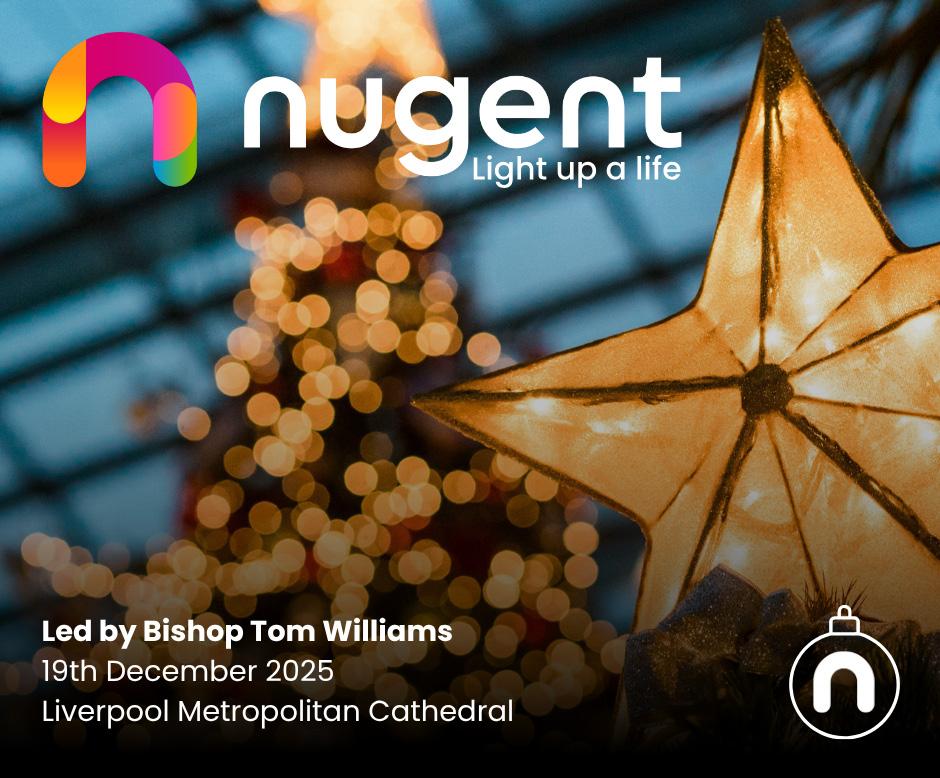
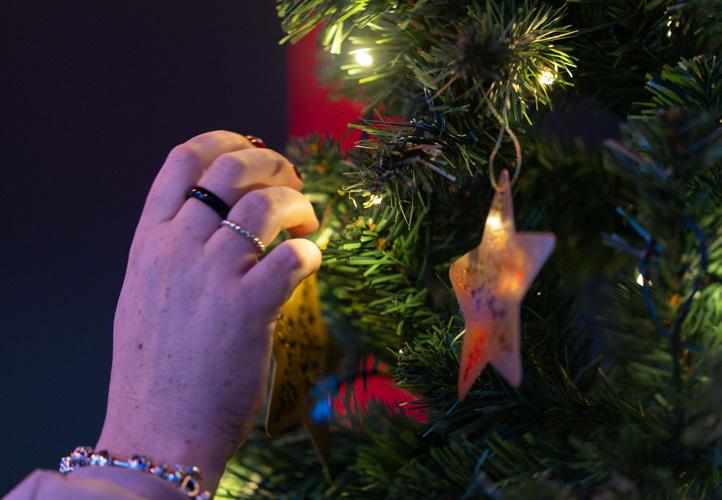

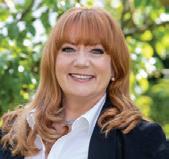
As the festive season draws near and homes begin to glow with Christmas lights, many of us take time to reflect on those who have brought light into our lives but are no longer with us. Nugent invites you to join their annual Light Up a Life service, a celebration of love, remembrance, and community.
Normandie Wragg Chief Executive Nugent
This year’s service will take place at Liverpool Metropolitan Cathedral on Friday 19 December at 12 noon, led by Bishop Tom Williams. The event offers a moment of peace amidst the busy season, a time to remember loved ones who are no longer with us and to celebrate the lasting impact they’ve had on our lives.
Nugent’s Light Up a Life service has become a cherished annual tradition, bringing together families, friends, and neighbours in a shared act of remembrance. Within the Cathedral’s beautiful setting, attendees can write a personal dedication in honour of someone special. These messages will be displayed on Nugent’s Remembrance Tree throughout the Christmas period, a symbol of connection and love that endures.
Supporting Nugent’s Mission
Each dedication is also a gift of hope. Donations made through Light Up a Life help Nugent continue its vital work supporting vulnerable children, adults, and families across the Liverpool City Region. By remembering a loved one, you’re also helping others find comfort, care, and compassion in their time of need.
Everyone is warmly welcome to attend the service, which will include a time of reflection, music, and refreshments.
• When: Friday 19 December, 12 noon
• Where: Liverpool Metropolitan Cathedral
• What: Service, Dedication Tree, and Refreshments
If you’re unable to join in person, you can still take part by making a dedication and donation.
For a suggested donation of £5 per name, your loved one’s name will be entered into Nugent’s Book of Remembrance and a star will be placed on the Tree of Light in their memory.
To make a dedication or donation: Email: fundraising@wearenugent.org Call: 0151 261 2000
Dedications can also be made online through Nugent’s JustGiving page or via an order form available on their website. Please include the name of the person you wish to remember when donating. To find out more, visit wearenugent.org/event/light-up-alife-2025.
The deadline for dedications to be included in the liturgy booklet is 21 November 2025. Dedications received after this date will still be included in the display book.
As we come together in faith and remembrance, Nugent’s Light Up a Life reminds us that love, like light, never truly fades.
